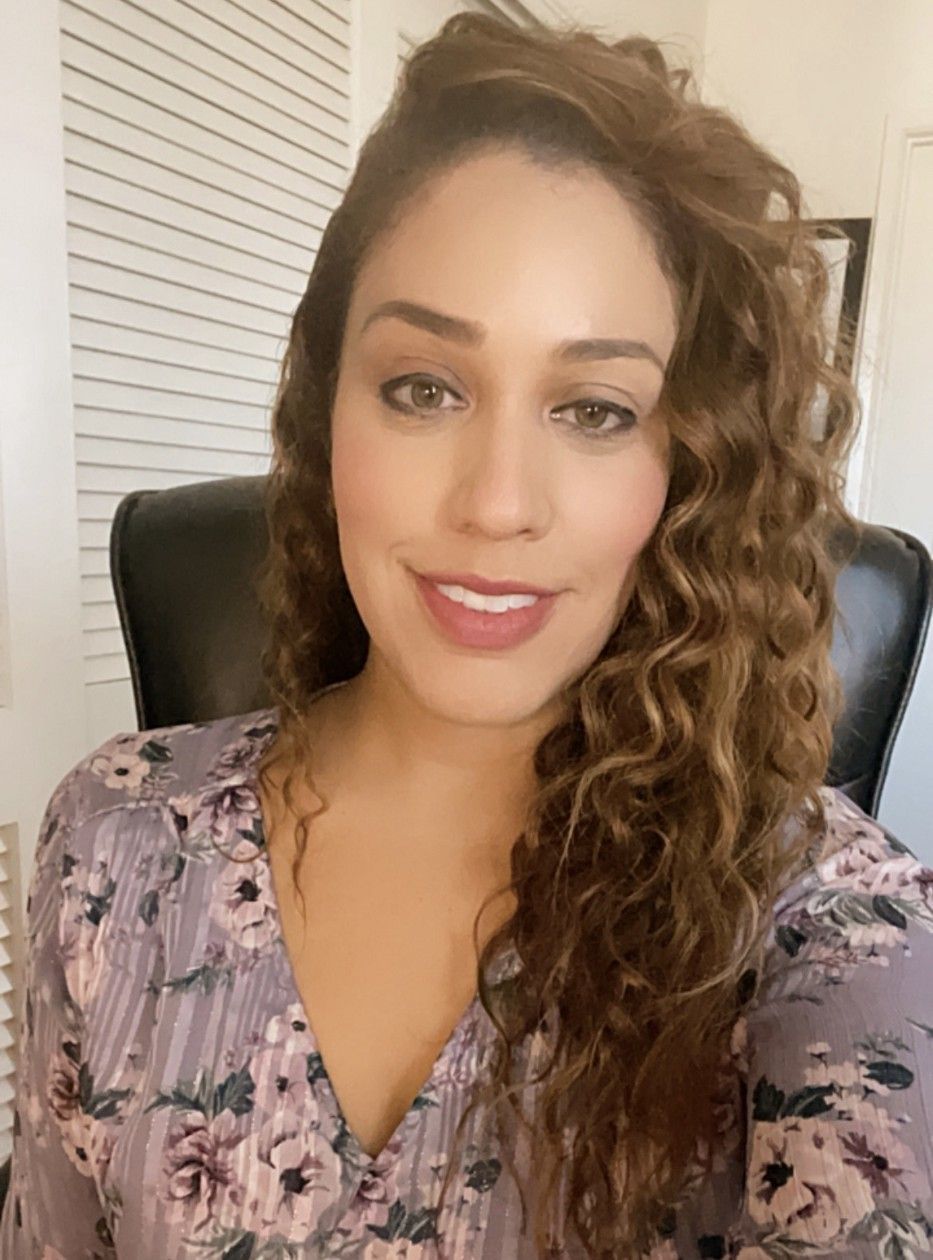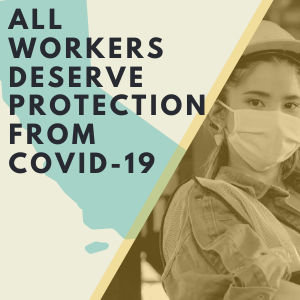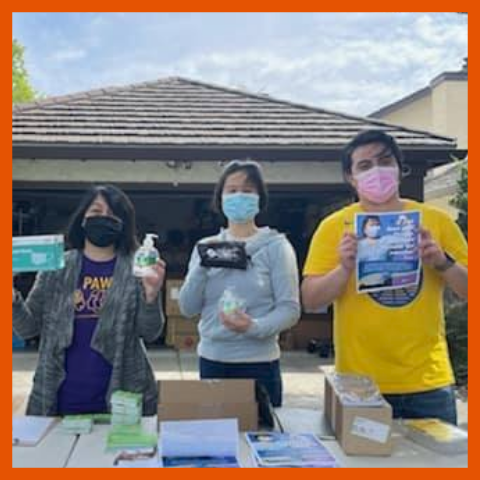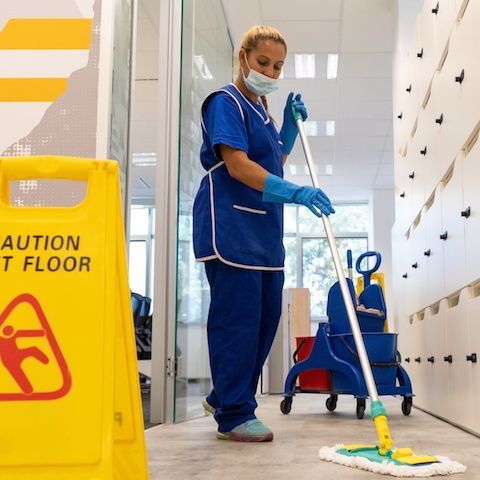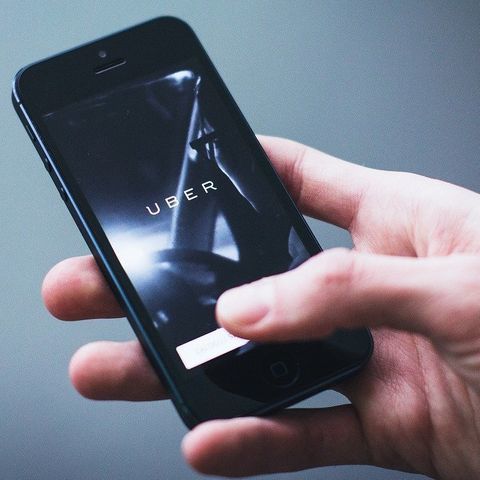by Leonard Brown

There’s something magical about watching the country roll by from the observation car of a long-distance train ride across the country. The rhythmic sway, the glow of the horizon, and the quiet moments of reflection set the tone for my journey to COSHCON 2025 — the premier gathering for workers, organizers, advocates, and safety leaders across the nation. Traveling solo gave me space to take in the experience, breathe deeply, and prepare myself for three days of learning, connection, and purpose. Along the way, I had some heartfelt conversations with people and shared a few laughs.

I arrived a day earlier than most due to the train schedule. Stepping out of Union Station in downtown Chicago felt like entering another world. I glanced up at the towering skyscrapers stretched into the clouds. Traffic buzzed with constant energy, and bright city lights pulsed with the rhythm of urban life. My first hotel — tucked beneath the elevated Chicago metro rail — was a reminder of the city’s unique character, where the thunder of trains overhead becomes a familiar soundtrack.
Later that night, I took a careful stroll in the surrounding neighborhood, passing by the warm glow of a local establishments in search of a late night snack as I explored a bit of the Chi, though I was careful not to venture off too far for safety reasons, because SS ICE OFFICER invasion of Chicago had already begun upon arrival. The air was fresh because it had rained earlier that day, but I couldn’t help but wonder how many people were being kidnapped at the moment. How many families were being ripped apart.
Despite the tension in the air, Chicago’s dynamic energy signaled that I had arrived exactly where I needed to be: the heart of worker advocacy.

Hosted by the National Council for Occupational Safety and Health, COSHCON is more than a conference — it’s a movement. This year’s event, held October 8–10 at the University of Illinois Chicago’s Student Center East, brought together a powerful, diverse, and bilingual community committed to advancing workplace safety and justice. COSH’s Katelyn Parady, Associate Director of Development and Strategic Program, and Jessica E. Martinez, Executive Director, kicked off the conference.


Participants strategized, shared firsthand stories of workplace raids by ICE (Immigration and Customs Enforcement) in various states, and shared their concerns and fears and the cruelty of such assaults on workers, together with strategies for building effective health & safety committees going forth to protect their loved ones. It was both heartrending and inspiring to hear these firsthand experiences, and to converse with people from different industries, states and backgrounds — all united by a shared dedication to improving conditions for all.


Prior to the second day of the conference, my colleague and I realized that Chicago was the birth of black labor and the civil rights movement. We could not leave the city without paying homage to the likes of Ida B. Wells-Barnett, The Brotherhood of Sleeping Car Porters and all those who gave their lives at the Haymarket Riot. As we visited each site of historic significance, we were honored to stand in their presence.

The workshop given by my colleagues addressing mental health in the workplace echoed and reminded me of the 1977, a transformative collaboration which unfolded between then Black Panther Party and disability rights activists at the historic 504.


The award ceremony was held in a setting that felt like stepping back into an old theater from a bygone era, like stepping back in time. Grand columns and soaring ceilings framed the evening, casting a dignified atmosphere over the celebration of modern worker power. As balloons bobbed against the backdrop of the theater’s history, the room buzzed with a shared sense of purpose.

The highlight of the night was the presentation of the ‘Building the Future of Worker Safety’ awards, where advocates were honored not just for their past victories, but for the solid foundation they are laying for the next generation. Standing in a place so deeply rooted in labor history, it was a powerful reminder of all those who laid the foundation before us, the solidarity of the workers remains the true energy and spirit of progress.

Freedom is never granted; it is won. With this powerful and unifying experience at COSHCON 2025, we renew our commitment to the ongoing struggle. The solidarity witnessed in Chicago, from the echoes of the Haymarket Riot to the courage of those sharing stories of present-day workplace raids, fuels our purpose. We leave here not just with strategies and connections, but with an unwavering resolve to continue the fight and to be the voice of the most vulnerable workers, ensuring that safety, dignity, and justice are rights, not privileges, for all.

by Rachel van Geenhoven
 When it’s psychologically easier to work sick than to call in
When it’s psychologically easier to work sick than to call in“I’m sick–I’m taking the day off,” I type in the group chat.
“Take care of yourself, Rachel,” my Executive Director responds.
Even after three years of witnessing the generosity of care and authenticity of concern consistently exhibited by the Worksafe team), I still feel traces of the old apprehension. How many times can I be sick before my commitment is questioned? How much grace will be granted before the needs and limitations of this human body become too inconvenient to my employer, and they swap me out for a more productive unit?
The Worksafe leadership team has been working hard over the last several years, together with staff, to ensure that Worksafe exemplifies the values that it promotes–safety, health, and justice for workers–within its own internal culture, and the results are apparent. Whenever workplace culture comes up, several of us express gratitude and admiration for the high level of respect, consideration and space for our humanity that we experience here. For most of us, this is the first place we’ve ever been shown equal concern for our well being as for our performance and productivity.
The status quo of treating humans like production units whose value to the company begins and ends with their measurable output is dehumanizing and demoralizing for everyone involved. There are so many things like this that have been systematically dehumanized in the name of optimization. The Western world has “optimized” all of us right out of good and happy communities and lives. Our entire world is due for rehumanization.
We recently started reading Emergent Strategy together as a team and meeting to discuss each chapter. adrienne maree brown’s book offers both philosophies and concrete strategies centered around the idea that to change the world we must change ourselves — including the way we work. It uses concepts from nature such as fractals, migration, and the movement of water to help us conceive of new ways of approaching processes that we’ve come to take for granted in Western cultures, such as rigid organizational hierarchies with charismatic leadership and top-down visions, strict schedules and disciplinary structures, and hustle/burnout culture.*
At a recent staff meeting we discussed the chapter on resilience, which gets into the benefits of decentralization, the need to push back against “cancel culture” in favor of collaborative healing and accountability, and the prerogative to learn and regroup after mistakes.
This past year of threat and challenge has seen an acceleration of some of these core principles which had already been gradually spreading through the social justice world–community building, adaptability, and most certainly resilience.
Amidst the dissolution of structures and systems that once seemed permanent and immovable, we’d like to reiterate that instead of seeking to return to “business as usual,” or to repair things back to normal, we must collectively take this opportunity to completely restructure and rebuild into something more inclusive, more communal, more compassionate; more human.
* I highly recommend the “How to Facilitate 250 Funders and Organizers” subheading in the chapter “intentional adaptation” for amazing ideas to create more engaging and effective conferences, which I first encountered while listening to the audiobook — I had to get a physical copy of the book just to have it on hand should I ever find myself organizing a conference!
by Azucena Garcia-Ferro
 Azucena presenting at the AACPDM 2025 Annual Meeting
Azucena presenting at the AACPDM 2025 Annual MeetingThis year, I had the honor of co-presenting at the American Academy for Cerebral Palsy and Developmental Medicine (AACPDM) 2025 Annual Meeting in New Orleans on the topic “Culturally Sensitive Care and Disability: Leveraging Interactions with the Healthcare System.” Our diverse panel included physicians originally from Argentina, Indonesia, and Iran — all currently practicing in the United States and bringing with them a rich tapestry of lived experience caring for patients from around the world.
My invitation to participate was not connected to my work at Worksafe. But as a professional dedicated to supporting workers, I hope that strengthening patient-provider relationships will lead to better understanding of the support individuals need not only to manage their health — but to thrive in the workplace.
I shared my personal journey of growing up in a monolingual Spanish-speaking household, in a family with limited resources, and how being the daughter of Mexican immigrants shaped my care experience as a young person with Cerebral Palsy. My contribution highlighted not only the practical barriers families like mine often face, but also the nuanced ways identity, culture, and disability intersect in every healthcare interaction.
During the session, I offered this message to the healthcare providers in attendance:
“As healthcare providers, every interaction you have with a patient is an intersection of multiple cultural dimensions — language, gender, socioeconomic background, immigration status, education, power dynamics, and more. Each of these layers influences how a person communicates, makes decisions, trusts authority, and understands health and illness.
When you meet a patient, you are not just meeting a diagnosis or a case. You are meeting a person whose worldview has been shaped by culture, by family, by their place in society, and by the way those factors have interacted — sometimes unequally — with the dominant culture.
So here’s what I want you to remember:
• Be curious, not judgmental. Ask questions that help you understand where a person is coming from culturally and personally.
• Recognize power dynamics. Your authority carries weight — especially for someone whose culture doesn’t encourage questioning authority. Create space where trust can grow.
• Go beyond language. Interpretation helps, but cultural understanding requires listening for meaning, not just words.
• Acknowledge your own cultural lens. We all bring assumptions with us — awareness is key.
Meet every patient with humility, curiosity, and respect.
I also emphasized that these principles of cultural humility extend far beyond the clinic.
When healthcare teams, employers, and systems communicate more thoughtfully and compassionately, people with disabilities are empowered to participate more fully and safely in their careers and communities.
I am deeply grateful for the opportunity to share my story and to advocate for more culturally responsive, equitable care — and for the continued advancement of inclusion for people with disabilities in every aspect of life.

by Stephen Knight

In recent weeks, Worksafe has led and contributed to a pair of formal ‘comment letters’ aimed at updating California’s leading regulation of workplace protections in our changing climate. Back in 2022, the state legislature advanced a law (Assembly Bill 2243) that directed Cal/OSHA to make positive changes to existing worker protections related to Outdoor Heat as well as its separate rules on Wildfire Smoke. The legislation focused on several areas of safety concerns, specifically ensuring that all workers are notified about the employer’s plan for heat illness including acclimatization of workers to working in high heat, as well as strengthening wildfire smoke protections for farmworkers.
Cal/OSHA released draft proposals on both heat illness and the smoke rule, with a deadline for comments in early July. (There will be advisory committees for both as well, dates TBD.) The law directs Cal/OSHA to propose the rules to the OSH Standards Board by December 1, 2025, and for the Board to vote by the end of the year.
Working in partnership with labor and worker centers across the state, Worksafe helped to submit a comment letter on each proposal. With respect to heat, Worksafe, California Rural Legal Assistance (CRLA) and Legal Assistance Foundation (CRLAF) staff have witnessed firsthand how the California Heat Rules have benefited millions of workers, especially agricultural workers in the Central Valley. Still, violations of workers’ heat protection rights remain commonplace, and Californians continue to get injured, fall ill, and die as a result.
One gap area unaddressed by Cal/OSHA’s proposal is language justice, and in the letter we urge that the rule ensure that non-dominant language speakers have equitable access to knowledge of their rights at work. The day-to-day details of implementation are vital for rules like this to be effective, and CRLA, Worksafe, and CRLAF still regularly hear reports that water containers are empty; that employees are discouraged from drinking water; that the water provided is warm or tastes bad; and that workers are not provided with cups. We urge close attention to the issue of mandatory breaks for workers in high heat conditions, as well as inclusion of all guaranteeing high heat recovery periods to all outdoor workers — not just to workers in agriculture.
With respect to the Smoke Rule, the current requirement for providing training to outdoor workers is not working. Many agricultural workers report being sent into fields during very smoky conditions without any training in the health effects of smoke exposure, the right to obtain care, the use of a respirator, or how to inform the employer if conditions are worsening. Our letter proposes the requirement of up-front training. The trigger for exposure of workers should be reduced to the Air Quality Index (AQI) for particulate matter (PM) 2.5 of 101, the level unhealthy for sensitive groups. We also push for a requirement for employers to manage a written program for controlling wildfire smoke exposure. Our letter strongly suggests rest breaks tied to respirator use, as farmworkers that want to use them as a form of protection have reported that when it is hot, it is difficult to breathe. And we propose exclusion pay for agricultural workers who may otherwise be required to work in a mandatory evacuation zone. There are many farmworkers who have reported that they have been in dangerous and unsafe work environments during an active wildfire, being exposed to a lot of smoke while working in a mandatory evacuation zone. Many are unable to decline the work because it is infeasible economically, and farmworkers reasonably fear both retaliation for declining to come to work and not being asked to come back to work.
Copies of our letters should soon be posted along with all public comment at the above links.
 a self-propelled sprayer tractor
a self-propelled sprayer tractor
It seems everywhere you look these days there’s somebody advocating for human beings to be replaced by machines. One such hot topic is the use of autonomous vehicles in agriculture — robotic tractors. Under pressure from the wine grape industry and other corporate farming interests, Cal/OSHA has been studying whether to allow autonomous vehicles to work alongside agricultural laborers in California’s fields.
We are deeply concerned about releasing such novel machines into already dangerous and unpredictable work environments. Recent press coverage casts Cal/OSHA’s study of “safety concerns” as if worker safety is just brainless government red-tape. Still, we are encouraged by OSH Standards Board members’ statements at their June meeting that their focus is workers’ health and safety, not addressing labor shortages or adopting new technology without careful consideration.
Indeed, the use of autonomous vehicles in agriculture raises many legitimate and under-studied safety concerns. In situations where the field is actually secured so there are no workers present, autonomous machines can reduce risks of injury due to tractor rollovers or exposure to pesticides, silica or valley fever spores. However, the use of robotic tractors in a secured field may still increase the risk of exposure for workers in nearby fields.
Use of autonomous vehicles in fields where workers are present poses risk of serious injury or fatality if sensors that are supposed to prevent collisions are obscured by glare or dust, or otherwise fail. Tractors and other agricultural equipment are operated under rugged conditions, in fields and on farm roads; not on paved, predictable city streets. Uneven surfaces, rocks, vines, and branches can damage the sensors these machines depend on. Collisions of passenger vehicles on autopilot with emergency vehicles show that autonomous vehicles still do not respond well in unexpected conditions and cannot be fully relied upon to guarantee bystander safety. In California fields, for example, many crops are harvested using packing and sorting trailers pulled behind tractors, and it remains unclear if sensors will be able to consistently account for all workers moving around the trailers. All of these dangers would be compounded during work at night or on foggy days.
Further, use of autonomous equipment in warehouses has resulted in high rates of repetitive motion injuries and tripping hazards due to the increased pace of work. Steps would need to be taken to avoid this outcome in agriculture, especially for smaller and faster moving pieces of autonomous equipment.
Finally, regulators should keep in mind that the agriculture industry has a poor track record for equipment maintenance, contributing to the industry’s high injury and fatality rates, and many employers will be unable or unwilling to properly care for or supervise the use of these machines, at the expense of worker safety.
The bottom line is that autonomous vehicles are an emerging technology not ready for active and unrestricted use in agricultural workplaces.
by Stephen Knight & Amira Sade-Moodie
 graphic created by Amira-Sade Moodie
graphic created by Amira-Sade MoodieThe deeply negative economic impact of the current anti-immigrant policies is well understood and widely reported, but that the impact also extends to workplace health and safety is less well known. With the increasingly militarized harassment of immigrants upending our communities across the country, it seems very timely to bring more attention to the findings of this study: When Labor Enforcement and Immigration Enforcement Collide: Deterring Worker Complaints Worsens Workplace Safety, by Amanda M. Grittner and Prof. Matthew S. Johnson.
Relying on data from the “Secure Communities” partnership between federal ICE agents and local law enforcement from the 2010s, the authors document dramatic negative impacts of immigration enforcement on worker health and safety. Looking at workplaces with a high percentage of Hispanic workers, they show that complaints to OSHA dropped off dramatically while injuries rose significantly.
Because the authors’ important findings are presented in a dense academic paper and often look like this, they are challenging to unpack for a general audience:

At Worksafe we wanted to bring this information to wider attention, illustrating these important points:
- Immigration enforcement overlapped with a large decrease in health and safety complaints while at the same time leading to a large increase in injuries among workplaces with Hispanic workers. (Table 1 p.14 — see above)
- Immigration enforcement led to worse compliance with OSHA regulations among workplaces with Hispanic workers (Table 3 p.23)
 graphic created by Amira-Sade Moodie
graphic created by Amira-Sade Moodie- Unionized workers were largely shielded from the increase in barriers to complain about health and safety, providing new evidence of how unions facilitate the enforcement of labor regulations (Table 4 p.31)
 graphic created by Amira-Sade Moodie
graphic created by Amira-Sade MoodieWith community members being stripped of due process and disappeared to prisons across the US and even overseas; with reporters, congress members and union leaders arrested and intimidated by masked federal agents; and with families being torn apart, there are certainly more immediate and dramatic impacts from this terrible onslaught on our communities than these workplace health and safety impacts. But this reality is a part of the whole story of why this is terrible public policy: more and more worker injuries and fewer and fewer complaints about unsafe conditions. And it’s very powerful to see how much that negative impact is reduced if you have a union in your workplace.
Worker Leader Leonard Brown Joins Kellogg Foundation Board Meeting in Washington, D.C. — District of Criminals
by Leonard Brown
Upon my arrival at Reagan International Airport in the Nation’s Capital on March 18, 2025, I was greeted by National Council of Occupational Safety and Health (NCOSH) Executive Director Jessica Martinez, who I was meeting in person for the first time since completing National COSH “We Rise!” Workers Leadership Training and being elected to the Board of NCOSH.

Shortly after meeting Jessica, we were whisked away to the Willard Intercontinental Hotel where I would be on a panel before the W.K. Kellogg Foundation Board of Trustees. After settling into this luxurious hotel rich with “His Story,” located across the street from the White House, Jessica and I met briefly in the hotel lobby to discuss a few talking points. We were there to show the Board the impact of their grant dollars–in my case, the way that the “We Rise” class assisted me in my journey from incarceration to advocacy.

Jessica and I took a walk to the National Mall to honor Dr. King, who was assassinated for fighting for workers’ rights for a safe and fair workplace–almost immediately after he began bringing his powerful advocacy against racial discrimination to speaking about wealth inequality and wage justice.

After paying our respects to Dr. King, Jessica and I took a stroll along the National Mall towards the Lincoln Memorial, remembering the over two hundred thousand men, women and children who had once marched with Dr. King on August 28,1963.

A little known hero of labor rights, A. Philip Randolph formed the Brotherhood of Sleeping Car Porters in 1925, the first labor organization led by African Americans. Randolph deserves to be honored for his contributions to labor rights, and we include him alongside Dr. King in the workers rights curriculum we developed at Worksafe. The guiding principles of Worksafe and National COSH were very much on our minds as we reflected on this nation’s history as we entered Lincoln’s Memorial:

We were overwhelmed with a deep sense of reverence for all those who had given their lives for the betterment of mankind. Especially to our black and brown sistas and brothas! However, we were also hit with the grim reality that the White House is currently being occupied by the heirs to the Confederacy — and a harsh crackdown on workers and people of color is underway.

Here you can see me walking the Kellogg Foundation board through my journey from incarceration to advocacy, articulating the significance of each photo, beginning with looking back at San Quentin from the Ferry, to the simple pleasure of picking strawberries with my friend in Santa Maria where I witnessed families of immigrants working hard in the fields, to moving forward as a community organizer for Worksafe and Worker Leader and then Board Member for National COSH. As the poster I’m holding in the photo states, my journey continues to be one of “resiliency, power, and transformation.”

This poster makes me think of Public Enemy’s song “Fight the Power.” Brené Brown says that we write our own stories. Trump is a bully who has weaponized the government against the people. However, we don’t have to sit by and watch. We will not be bullied. We will not be silenced. As Brené Brown says, “We are the authors of our lives. We write our own daring endings.”

What will the human cost of the Trump presidency be? He has already begun to remove rights from marginalized people, one group at a time–students here on visas who spoke out against Israel’s actions in Gaza; “gang members” who were given no due process before being sent to a torture camp in El Salvador.
First they came for the socialists, and I did not speak out — because I was not a socialist.
Then they came for the trade unionists, and I did not speak out — because I was not a trade unionist.
Then they came for the Jews, and I did not speak out — because I was not a Jew.
Then they came for me — and there was no one left to speak for me.
— Martin Niemöller
If one person can have due process removed, all of us can be stripped of due process. May we learn from history and each stand up to tyranny.
by Stephen Knight

It was encouraging to see Assemblymember Sharon Quirk-Silva (D-Fullerton) use her authority as Chair of Assembly Budget Subcommittee №5 on State Administration to demand accountability from the Newsom Administration over the ongoing challenges and failures by the Department of Industrial Relations.
For what was billed as an update from Cal/OSHA regarding vacancies, it was concerning to listen to apparently underprepared agency representatives resting largely on touting recent (weakly documented) general progress and talking about how much they are talking about the problem. The agency asserted that they have seen consistent progress over the past 18 months, with an overall vacancy rate dropping from 35% down to 23%.
You can watch the hearing here, it’s the first item on the agenda (starting at 00:38).
At the Inside Cal/OSHA blog you can find the latest numbers regarding the staffing crisis at the agency, with particularly glaring vacancies throughout the vital enforcement positions. The blog’s author Garrett Brown reports that 43 percent of enforcement positions remain vacant, just shy of half of all positions.
As was pointed out by a public comment from a representative with the State Building Trades at the Assembly Budget hearing, this staffing problem at Cal/OSHA has persisted for forty years.
The Legislative Analyst’s Office (LAO) representative on the panel made an observation that was directly on point: the number of inspectors is insufficient, the amount of new responsibilities is growing, and the agency should be stepping up to the growing task of protecting the state’s workers. In response to a question, Cal/OSHA showed little interest in demonstrating that they are meeting the health and safety demands of the modern workplace — the rise in letter ‘inspections’ in lieu of in-person site visits in response to worker complaints strongly suggests they have a long way to go.
It is encouraging to hear the committee pressing the agency on its minimum requirements, such as for an engineering degree, with work being done on a workload study. An audit of Cal/OSHA is due out later in 2025 and hopefully may shed more useful light on the situation than just discovering what is already well-known: that more staff is needed (as was found to nobody’s surprise in a recent audit of its sister agency the Labor Commissioner’s Office in 2024.)
To be clear, what’s needed is not more studies. Worksafe and its partners continue to push for real progress and for a workforce that is representative of the many diverse ethnicities and languages found throughout California’s workplaces. We look forward to working with legislators to review the audit and workload study and ensure there is continued, sustained progress in building a stronger and more functional California worker protection agency.
California needs workplace protections now — for the next pandemic
by Stephen Knight

In Spring 2020, illness and death swept across our state and the world in the wake of a new pathogen: COVID-19. At Worksafe, we huddled in crisis mode with nurses, janitors and other workers and workers rights groups to demand emergency workplace rules to protect Californians from COVID on the job; Cal/OSHA enacted statewide rules in late 2020, almost a year after the pandemic first landed.
Today, all the ingredients are back in place for California having to scramble again to address a public health threat that is out in plain view. Bird flu is being described as a pandemic unfolding in slow motion. Now, we are learning that at least one person has died from H5N1; in California Governor Newsom has declared a state of emergency to address the crisis on the state’s dairy farms. But there is far more that can and should be done. It is high time we develop a general contingency plan for new pandemics, and workplace protections must be high on the list. Whatever the nature of the next disease threat, California must be prepared.
Employers in health care have had specific regulations for ATD for years. There is no reason at this point to be caught by surprise. But the few remaining elements of the COVID-specific protections are now expiring. When is California going to take steps to protect all the rest of us workers from the next aerosol transmissible disease (ATD)?
Worksafe’s 2020 petition for an emergency COVID standard proposed that the OSH Standards Board also move to create a general ATD standard to be in place once the COVID-specific emergency expired. But we are not hearing anything to suggest that this plan is on track. There are protections in place for dairy workers which need to be enforced. But by Spring 2025, employers will have no guidance or requirements on how to respond to the next pandemic. Cal/OSHA must move quickly to advance a permanent ATD standard for the next pandemic, and the one after that.
Preparation and protection now can reduce the future impact on workers, employers, and the economy as a whole. A study from JAMA Health Forum documents that “stringent COVID-19 restrictions were associated with substantial decreases in excess deaths during the pandemic,” while reporting that some restrictions, such as school closings, “likely provided minimal benefit while imposing substantial cost.” JAMA’s summary of the economic benefits are eye-popping:
using value of statistical life estimates ranging from $4.7 million to $11.6 million, the estimated lives saved from states with strong (vs weak) restrictions over the 2-year period were worth $1.3 trillion to $5.2 trillion — 6% to 22% of 2021 gross domestic product.
And a PPIC report in January 2023 looking at COVID-19’s impact on life expectancy found that California “fared better than most states. Public health efforts, along with state and local policies, have led to a lower death rate from COVID than in the rest of the country and other large states — including Texas, Florida, and New York.”
The bar set by our shared experience with COVID need not define how we respond in the future. With preparation we can be smarter and more effective in our measures to prevent unnecessary deaths during future outbreaks. We learned in 2020 that workplace safety for essential workers in particular is a vital element to keeping our economy running — and to protect the most vulnerable populations that too often bear the brunt of our collective failure to look ahead.
Public health professionals must push through the noise and advance science-based policies that save workers’ lives and protect our families and communities. Proper masking and ventilation are strong candidates for measures to include as part of a standard; the Standards Board has already recognized that compensation for workers who are required to exclude themselves from the workplace in order to protect others is another crucial and just element.
Cal/OSHA is entrusted with protecting the well-being of all workers. This trust demands prioritizing an ATD standard for all workers before — not after — the next pandemic begins to ravage our communities. We call upon the Governor to ensure this process is expedited consistent with the evidence of what keeps workers safe.
by Stephen Knight

We’ve written before about the ongoing staffing crisis at the Department of Industrial Relations, which includes both Cal/OSHA and the Labor Commissioner. I recently read an internal Cal/OSHA report, which included that:
- Growth at Cal/OSHA (aka the Division of Occupational Safety and Health — DOSH) has fallen significantly behind the growth in the size of the state’s workforce, and there are “currently critical vacancies throughout the Division” that are making it difficult even for that insufficient level of staffing to effectively regulate employers and protect workers;
- Staff are concerned about poor quality of internal communications, and the fact that “there has been no consistent and effective explanation” regarding the agency’s goals and objectives;
- These are “long-standing issues within the Division,” going back as far as the end of the 1980s;
- “an overwhelming concern of interviewed employees was the understaffing and critical vacancies throughout the Division, including administrative staff, attorneys and medical personnel, as well as field personnel and managers.”
- The memo closes with a statement of dedication from leadership to explore “how to eliminate all critical vacancies in DOSH… especially in the areas of industrial hygiene and multilingual capacity.”
These are incredibly topical and concerning observations from inside the agency. Cal/OSHA’s depletion of industrial hygienists is chronic, and KQED recently brought a focus to the severe shortage of multilingual employees.
So you may be surprised to learn that all of the quotes come from a memo written in November 2011 — a report back after interviews with almost 400 employees at DIR. That’s right, more than a dozen years ago. All the same issues and concerns.
New Cal/OSHA chief Debra Lee and her team have made clear their focus on filling staffing gaps and we share their concern — nobody wants to come back in 2036 and find Cal/OSHA is still not equipped to protect California’s workers.
by Rachel van Geenhoven and AnaStacia Nicol Wright

The removal of the Department of Corrections from the protections of the Indoor Heat Standard has led Worksafe to invest more in the intersection between worker rights and prisoner rights.
In a sane and caring system of justice, the aim would be restitution, healing, rehabilitation, and reintegration. The focus would be on harm reduction, and money and connections would not protect people from accountability, nor would lack of money and protections make people more vulnerable to injustice.
Instead, we know that our prison industrial complex unfairly targets BIPOC individuals (Black/brown, indigenous, people of color) as well as the impoverished; that it punishes “crimes” such as lacking the means to obtain shelter; and it effectively ignores broadscale offenses like stealing money from the paychecks of hundreds of workers at a time.
The rights of the incarcerated land squarely at the center of all workers rights issues. The issue of workers rights is an issue of exploitation vs. humanity, and no workers are more exploited and dehumanized than the incarcerated. It has increasingly become more widely understood that the criminal justice system is an industrial complex which originated with chasing down slaves and returning them to their owners. Despite the abundant evidence that it has not strayed far from that general purpose (legitimizing and enforcing slavery), there remains a passive acceptance of incarceration, and a stigma against the incarcerated, that make it difficult to transform this deeply harmful system into something that seeks to repair harm and teach and rehabilitate those who cause it.
Stigma and broad injustices aside, incarcerated individuals do have basic rights, both as human beings, and as workers. According to California Labor Code Section 6404.2, anyone working in the correctional industry is considered an “employee.” This means that incarcerated workers are in theory protected under the same workplace safety regulations that other employees benefit from. Unfortunately, many of these workers find themselves with little recourse as they face unique challenges related to extreme heat conditions and the dilapidated facilities where they work.
Incarcerated workers contribute significantly to California’s economy — over 800,000 incarcerated individuals across the U.S. generate around $10 billion in goods and services each year. No-one’s value in society should be based on their financial contribution. Nevertheless, many prisoners work in facilities that lack basic necessities like air conditioning and ventilation. It’s no wonder that a large percentage of incarcerated individuals report extreme heat as a serious hazard to their health and safety.
At Worksafe, we are focusing on the need for a Indoor Heat Standard for all people working within Corrections, after the entire Department was excepted from the standard which recently passed in California. The death of Adrienne Boulware on July 6th of this year, shines a dramatic and tragic light on the issue of heat in prisons. Temperatures as high as 106 degrees have been recorded in the cells of the Central California Women’s facility in Chico, the facility where she died.
We must not allow the prior existence of deeply unjust, harmful and racist institutions and practices to numb us to the urgency we feel, as sane and caring humans, to end the rampant injustice and harm they inflict on individuals and communities.
Through our partnership with Legal Services for Prisoners with Children, we’re working hard to educate both incarcerated individuals and the general public about these issues. We’re also pushing for changes that lead to better conditions. This includes calling on Cal/OSHA to write and implement specific heat standards specifically for incarcerated workers.
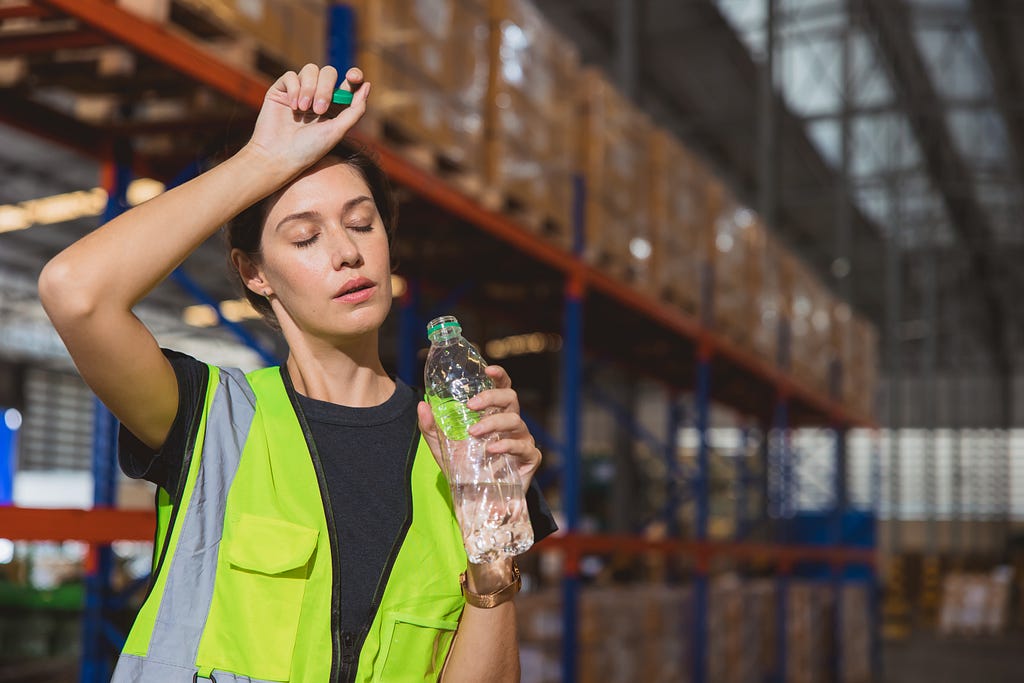
by Stephen Knight
The state of California is poised to have groundbreaking indoor heat regulations in place in the next few months. Or weeks, as the case may be. This is a significant and long overdue moment for workplace protection, and an example for the nation where Federal OSHA has been struggling for 50 years to advance similar heat rules.
The Heat Illness Prevention in Indoor Places of Employment regulation was supposed to be approved on March 21 but got derailed by administration objections over the reported fiscal impact on the State Department of Corrections. Advocates and OSH Standards Board members were taken aback by the last minute Intervention that disrupted the rulemaking process and potentially undermined the prospect of having rules in place this year.
Administration officials committed to getting the rules back on track and eventually delivered with a revised standard to the Standards Board for a June 20th vote, but with the Department of Corrections explicitly exempted from any indoor heat protections.
In the interim, however, the Governor moved to dismiss a leading worker health and safety expert and advocate from the Standards Board, Laura Stock, and he demoted the longstanding chair, Dave Thomas, both of whom were outspoken at the March meeting about their concerns over the administration’s disruption of the process. The Department of Finance has refused to disclose the basis for this decision.
What happens next? The State Office of Administrative Law (OAL) has 30 days to review the final regulation and approve it to become the law. Current state practice is to issue new regulations on a quarterly basis, which would mean a further delay until October 1. It seems that the administration, the Standards Board, and Cal/OSHA are asking OAL to expedite its review for good cause, in order to provide protections to California workers suffering right now from extraordinary heat this summer. These rules were supposed to be in place in 2019, and then again by March 2024, and yet still they remain pending and not in force. Meanwhile, business and industry groups continue to voice strong objections and may be planning to sue to stop these heat rules from coming into force.
The proposed standard is a significant step forward in protecting workers from heat-related illnesses and injuries. But Worksafe is deeply concerned that corrections, detentions and juvenile facilities have been excluded. The Department of Corrections alone employs over 57,000 staff across 35 institutions, including correctional officers, healthcare professionals, and maintenance staff. These workers are at risk of heat exhaustion and dehydration due to working in archaic, poorly ventilated buildings with little protection from temperatures which will only worsen in coming years.
Incarcerated workers are employees under California Labor Code and are subject to the same workplace safety regulations as any other employee. Excluding corrections facilities from the heat standard will only exacerbate the unique challenges and hazards they face. In early July a prisoner died from apparent heat exposure at Central California Women’s Facility in Chowchilla.
It remains to be seen when and to what extent workers in California’s state prisons will ever be protected from indoor heat.

By Stephen Knight
Thursday, March 21st was a complicated and historic day for occupational safety in California. New Indoor Workplace Heat Illness Prevention rules were set for approval by the Standards Board, but the Department of Finance intervened in an extraordinary last minute maneuver to withdraw its approval, taking the item off the agenda. Many workers and advocates showed up in protest, offering extensive and pointed testimony, playing drums and holding up signs and even briefly stopping the meeting.
The Board appeared to be equally frustrated by the move, voting unanimously to approve the standard. It remains unclear whether this vote was effective or merely symbolic; advocates and watchdogs are examining the legality of the situation.
This matter is getting national coverage in the LA Times, CalMatters, KQED, NPR and elsewhere. Statements were issued by SEIU and the Labor Fed:
“It’s outrageous that after years of advocacy, on the eve of the vote to finally pass this overdue heat standard, we learned that it was pulled from the agenda with no prior notice or explanation,” said Lorena Gonzalez, head of the California Labor Federation, in a Thursday news release. “It’s shameful that the state of California is turning a blind eye to preventable workplace injuries and deaths.”
At the May Standards Board meeting last year, workers gave powerful testimony regarding the unbearable conditions they face as the temperatures rise, and their employers refusal to offer them even the most basic concessions or protections until they are forced by law. But this standard isn’t a year old–it’s ten years in the making. And it’s already too late for workers like Esteban Chavez Jr., who lost his life at age 24 to UPS’s refusal to invest in air conditioning for its fleet of delivery vehicles.
How quickly we can get the standard back on track remains to be seen.

by AnaStacia Nicol Wright
In January 2023 the Department of Homeland Security (DHS) issued new guidance entitled “DHS Support of the Enforcement of Labor and Employment Laws,” A federal guidance is a statement written and published by a government agency of general applicability and future effect. They are typically issued to interpret or set forth a policy on statutory, regulatory and technical issues.
The recent DHS guidance details a deferred action plan for immigrant workers without legal status in the country. Deferred action is generally a way to postpone immigration deportation proceedings; most people have heard of “DACA,” which is a specific deferred action program for “child arrivals” — people who came to the US as kids. The recent DHS deferred action plan offers undocumented immigrant workers two years deferred action status and a two year work permit to individuals reporting or witnessing violations of labor and employment laws and assisting federal, state, or local labor and employment agencies in investigating, enforcing or prosecuting those allegations.
This protection was achieved due to pressure put on DHS by the Labor community to finally provide a remedy for immigrants who experience labor violations but can’t report them due to fear or threat of retaliation. The Center for Human Rights and Constitutional Law joined this fight last year and submitted a letter signed by a variety of political leaders and community advocates to DHS and the Department of Labor.
This year, they reached out to partner with Worksafe to create a series of training sessions for unions, lawyers and community advocates on this new avenue of temporary immigration relief for workers. The training addresses common areas of labor and employment law that immigrant workers may have seen violated, and how those violations can be used to attain deferred action via this new DHS program.
While this was a huge win, the DHS policy still falls short of standard whistleblower protections, and fails to provide a pathway to citizenship even for those people willing to come forward and assist the government in enforcing labor laws.
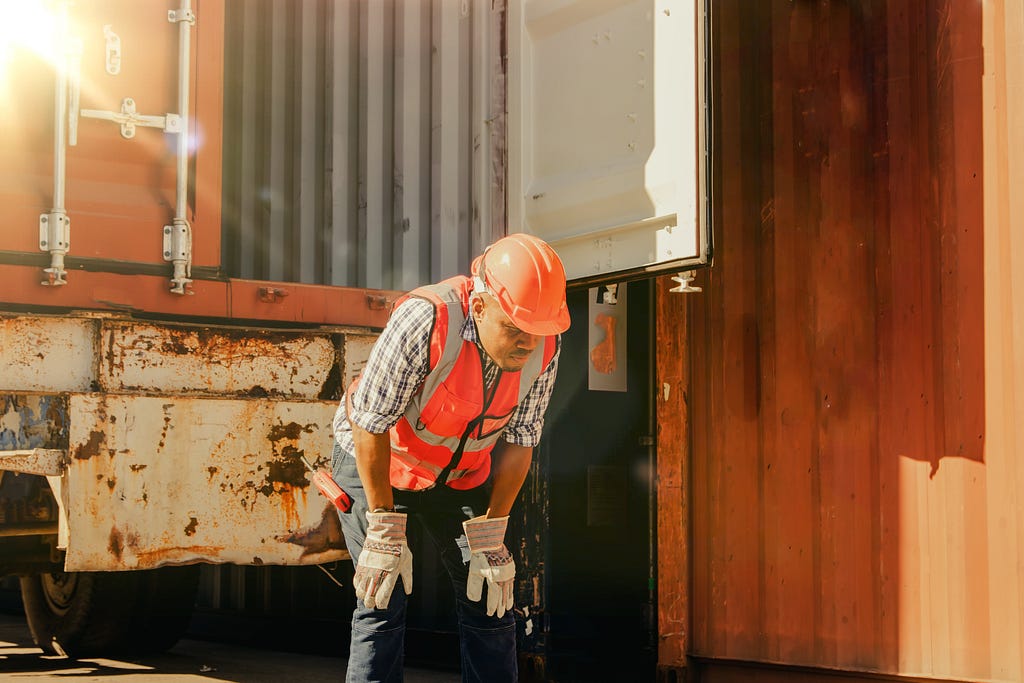
by AnaStacia Nicol Wright
Heat illness is a serious concern for California and its workers. While once known for its year-round pleasant weather, the state’s summer temperatures have been rapidly increasing, along with the rest of the world’s temperatures, in the face of global warming. Outdoor heat protections have been in place for many years, and advocates have been pushing for similar indoor heat protections to address this growing concern. As of this writing, in August 2023, the agencies are still working on it, but real progress is finally being made.
High heat temperatures pose a serious threat to workers. What’s worse is that lower income workers are at least five times more likely to be hurt on the job due to heat than higher income workers.
In addition to high heat being a workplace hazard in itself, it also leads to a variety of workplace injuries. A 2021 study of 18 years of California workers’ compensation records found that the risk of all workplace injuries was five to seven percent higher when the temperature was between 85 and 90 degrees. When temperatures were over 100 degrees, the overall risk of injuries was 10 to 15 percent greater. Evidence continues to mount that California is still trending toward heat extremes. And scientists predict ever-increasing temperatures leading to additional workplaces hazards caused by heat.
Heat illness occurs when the body cannot properly regulate its internal temperature by sweating. Once sweat becomes insufficient, your internal temperature begins to rise. This presents major problems because human beings need to maintain their internal body temperature within a very narrow range of a few degrees above or below 98.6° F. The inability to do so causes important functions and organs to shut down. Even when it’s sufficient to maintain functional temperatures, prolonged sweating can deplete the body of necessary water and minerals and cause dehydration. This may lead a person’s muscles to stop working properly and begin to spasm or cramp, and cause the body and brain to become tired or confused. All of these symptoms can create a dangerous work environment for affected employees.
Cal/OSHA has repeatedly revised the standard since its initial draft in February 2017. The Division brought forward a proposal for a public hearing before the Standards Board in May 2023 and is now in the last stages of finalizing the rule for adoption. While the rule is groundbreaking and hits many major points of worker safety-related concerns, it still falls short of being strong on worker protections. More importantly, it’s yet to be implemented.
So what does the Cal/OSHA heat standard propose to do? At a high level, the proposed standard would obligate employers to think ahead and to enact certain heat protective measures once indoor temperatures reach certain points. The standard creates a two-tiered system of protections, with the overall standard protections kicking in at 82 degrees when employees are present, and a series of additional protections being triggered if temperatures reach 87 degrees.
Some of the provisions that must be in place when indoor temperatures reach 82 degrees:
- Employees must have access to potable water
- Cool-down areas must be made available to employees
- Employers must implement and follow certain emergency procedures
- New employees must go through an acclimation process to help them adjust to the temperatures
- Employees must be trained on safety rules and procedures
These provisions are imperative for preventing heat illness and injury. Likewise, requiring employers to be prepared for the worst case scenario with emergency response procedures is vital to mitigate heat illness that occurs despite precautions. These simple requirements will save lives.
Nonetheless, the protections fail to go far enough.
For example, technical experts with the ACGIH recommend implementing general controls at 75.2°F WBGT (“WetBulb Globe Temperature”) for employees performing heavy work, and at 71.6°F WBGT for employees performing moderate work while wearing double-layer woven clothing. Yet despite this strong evidence, the proposed indoor heat standard begins implementation at 82°F.
Another shortcoming is that the current proposal leaves the determination of when or whether to take a cool-down break to the workers. This can lead to workers not feeling empowered to or comfortable requesting a break, or not requesting a break due to work quota demands or pressure or for fear of retaliation from managers or other employees, etc. If regulators are serious about ensuring that workers take needed breaks, they write specific rest periods into the rules.
The unfortunate choice for worker advocates is between pushing back against this less-than-adequate standard or accepting it in order to see some protections in place for workers by next summer and beyond.
AnaStacia Nicol Wright and Rachel van Geenhoven

July 20, 2023, The California Occupational Safety and Health Standards Board Meeting. A young man named Leobardo Segura-Meza speaks of coming to this country from Mexico at the age of sixteen to find a job and start a family. “I apologize if it is very difficult for you to hear me because of the noise,” his interpreter translates, “due to my oxygen tank.”
At only twenty-seven years old, Leobardo requires this tank to breathe. He is on the waitlist for a lung transplant, and has watched coworkers die awaiting their own lung transplants. His wife Miriam sits beside him. They have two children together, and she has another child from a previous marriage. After working in countertop fabrication for eleven years, he is no longer healthy enough to support the five of them.
The disease which ended his coworkers’ lives and now threatens Leobardo’s is a severe lung disease called silicosis, caused by breathing in tiny bits of silica, a common mineral found in many types of rock and soil. Inhaling silica particles over time causes permanent lung scarring known as pulmonary fibrosis.
Quartz countertops were popularized by home style gurus such as Martha Stewart. What makes quartz alluring is that it doesn’t require polishing or sealing like other popular stones such as granite. This cuts down on the cost for consumers–but the price paid by the (primarily young, Spanish-speaking Latino) men who fabricate them is unconscionably high.
In California, at least ten workers have already died from this disease after working in shops that make kitchen and bathroom countertops. A University of California at San Francisco pulmonologist recently coauthored a report describing over 50 countertop workers in California with silicosis.WOEMA, an association of physicians and OCC health experts, petitioned for an emergency standard after seeing the growing impact on patients.
It’s typical for bad silicosis cases to require a double lung transplant. A progressive, debilitating, and sometimes fatal disease, chronic silicosis typically occurs after 10 or more years of exposure to respirable crystalline silica. However, the disease can occur much more quickly after heavy exposures.
“I fear there are not enough lungs to be transplanted for the men working in countertop fabrication,” Leobardo stated.
The Board had a memo and proposed decision from its own staff that recommended denying the petition for an emergency standard. Many public comments raised direct concerns about the content and analysis of those materials. It seems that support for doing nothing came from a single attorney with Seyfarth Shaw representing stone manufacturers.
Worksafe organized a joint letter with more than 10 community organizations, unions and advocates, urging the Standards Board to accept the Petition for an emergency ETS to address the new silica crisis.
The Petition aimed to simplify rules for small operators and inspectors in a way that the existing regulation doesn’t by, prohibiting dry fabrication without the used to water to suppress dust, requiring airline respirators or power air purifying respirators to be used in fabrication facilities and increase reporting obligations when silica products are being used.
After hearing Leobardo’s powerful story, alongside the stories and recommendations of physicians and experts, Board Chair Dave Thomas told Leobardo “I hope you’re able to get your transplant soon.”
Because of Leobardo’s courageous testimony and WOEMA action, the Board members followed Cal/OSHA’s strong recommendation and voted 4–0 to approve Cal/OSHA to quickly prepare an ETS for approval. The first Advisory Committee meeting to advance the standard was held last Wednesday, just a few weeks after the vote.
by Karin Umfrey
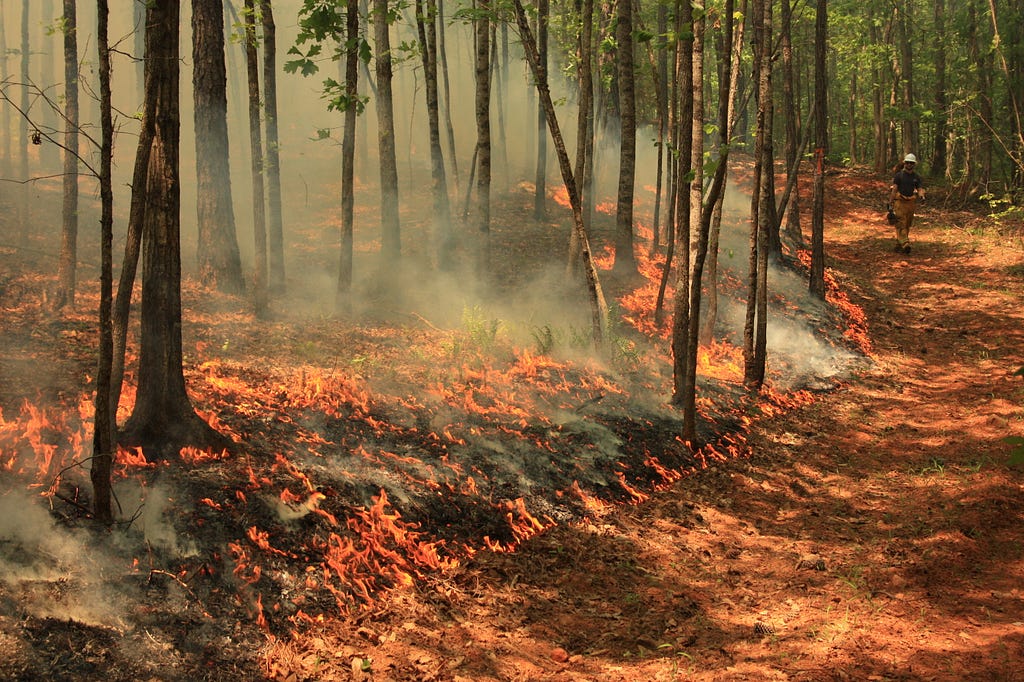
Prescribed fire is a form of planned and controlled burning to manage landscapes by reducing the likelihood of catastrophic burning. Long before becoming a part of government forest management practices, cultural burning, the intentional use of fire “to achieve [Indigenous] cultural objectives,” was practiced for millennia. (Kira M Hoffman et al, Western Canada’s New Wildfire Reality Needs a New Approach to Fire Management, 2022 Environ. Res. Lett. 17 061001.) Cultural burning is an effective tool in forest management practices because it routinely reduces the amount of fuel available to contribute to the intensity of fires. Likewise, if used more often, prescribed burning is a wildfire mitigation strategy that will improve the outcome in our landscapes and ultimately lead to better health outcomes for the public and for those workers whose outdoor labor leaves them most exposed to wildfire smoke.
Wildfires can get out of control because of the “accumulation of large amounts of dry and dead fuel — a direct result of over 100 years of” a zero fire approach. Id. Fire is a natural and ultimately inevitable part of the ecosystem- “the consequence of attempting to exclude fire is increasing the occurrence of extreme wildfires, which can be resolved by returning” to prescribed fires. Id. The Indigenous practice of cultural burning has historically been effective and successful as a wildfire mitigation strategy. Indigenous communities who want to lead and engage in wildfire management that aligns with their cultural and ecological values should be given their rightful power back to do so. Our local and state governments need to learn from these practices by incorporating prescribed burning as a practice.
Just this summer, the Canadian wildfires raged completely out of control. In June, the wildfires pushed heavy and hazardous smoke into the Northeast, which has continued to linger, affecting the air quality of many in the United States for weeks on end. The smoke started to clear up, but as of July 17, hazardous smoke has returned. This smoke has “blott[ed] out blue sky and sun … blanketing dozens of cities with unhealthy air that triggered warnings to limit the time spent outdoors.” Christine Hauser and Claire Moses, Smoke Pollution From Canadian Wildfires Blankets U.S. Cities, Again, NY Times (July 17, 2023) https://www.nytimes.com/2023/07/17/us/wildfire-smoke-canada-ny-air-quality.html
According to the National Oceanic and Atmospheric Administration and LandScan (a population database), this Monday, July 17, about 73 million people in 29 states have been affected by the shifting, migrating smoke from the Canadian wildfires. Id.
The West Coast is relatively unplagued by fire–there are a few smaller ones; it’s rare that we’re completely without them — but climate change has not stopped. Extreme heat events continue, and as long as California’s government fails to act judiciously, the specter of the next out-of-control fire looms large.
Wildfire containment, more or less by definition, is impractical and, too often, impossible. The reduction of fuel facilitated by prescribed fire has been demonstrated to be perhaps the most effective way to ensure containment of future fires. (Robinson Meyer, The Simple Reason That Humans Can’t Control Wildfires, The Atlantic [Nov. 13, 2018] https://www.theatlantic.com/science/archive/2018/11/california-wildfire-why-humans- cant-control-them/575740.)
This year Worksafe supports SB 310 (Dodd) Cultural Burning. SB 310 is sponsored by the Karuk Tribe and helps restore sovereignty to California Tribes by allowing federally recognized tribes to use beneficial fire for cultural purposes without applying for permits from California agencies.
The use of prescribed fire and cultural burning — sometimes collectively called “good” or “beneficial” fire — is a key component of wildfire risk management in California. These projects reduce hazardous fuels, help restore ecological and cultural values, and make our communities safer and our ecosystems more resilient to wildfire. However, lack of liability insurance for practitioners has been a major barrier to increasing the use of prescribed fire, even as firefighters, fire scientists, at-risk communities, and state, federal, and tribal leaders call for more. (There are currently funds being established to address this concern).
We need as many different kinds of organizations as possible working together on this topic. As wildfires continue to rage out of control, there is a vast public misunderstanding and lack of awareness on the effectiveness of prescribed burns for improving wildfire outcomes.
(If you’re interested in signing onto SB 310, or brainstorming on education and outreach on wildfire mitigation, please reach out to comms@worksafe.org and indicate your topic of interest in the subject line of the email.)
by Rachel van Geenhoven and Jora Trang

Worksafe is part of the Coalition of Low-Wage and Immigrant Worker Advocates (CLIWA), and we attended the recent annual retreat, which included many important discussions about the intersection between legal aid and worker advocacy. Unsurprisingly, the question of unauthorized practice of law came up, namely: what constitutes unauthorized practice of law?
The regulation against it is designed to prevent the unscrupulous and unauthorized from giving bad legal advice and taking people’s money. Unfortunately, employer groups sometimes wield it against advocates who are helping their workers fight exploitation.
The important distinction that non-legal advocates should keep in mind is the difference between providing “legal information” and providing “legal advice.” Here are some important things to keep in mind for non-legal advocates to avoid slipping into the unauthorized practice of law while helping workers.
Although there is no bright line rule about what defines the ”practice of law,” a survey of guidelines, laws, regulations, and caselaw reveals:
- Advertising or providing legal services
- Giving advice on legal rights
- Selecting or drafting legal documents
- Providing legal representation before an adjudicative body
- Negotiating legal rights for somebody else (i.e. settlement)
- Writing persuasive “demand” letters that apply the law to the facts
Here is what you CAN do when talking to workers about their legal situation and rights:
- Educate them about the facts of the laws and the legal process
- Explain laws, regulations, standards, and legal procedures
- Tell them how to bring an issue to court
- Give them info on a court or state agency self-help website
- Tell them their options and the steps to carry out an option
- Give them information about how past cases have gone
- Share citations or copies of caselaw, statutes, court rules, and ordinances
- Offer general referrals to other organizations
- Provide forms & instructions, and record info given by the person on the form
- Check their forms for completeness and point out non-legal problems and how to fix them
- Help them figure out deadlines
And here are some instances of things that may constitute unauthorized practice of law:
- Give them legal advice about the course of action they should take; guide or direct them
- Answer questions about whether they should/should not take a legal action
- Suggest or offer an opinion about what procedure or process to take, talk about what you would do, what’s a good idea vs. what’s a bad idea, how best to present an issue to a court/agency
- Suggest which option to pursue
- Predict how a judge/agency may decide
- Give an analysis or interpretation of laws, rules, regulations, or ordinances based on the specific facts of someone’s case
- Recommend specific attorneys (instead: send them to State Bar lawyer referral program)
- Draft the wording on the forms for them
- Point out legal problems and how to fix them legally
- Help someone figure out the timing involved in their issue such as the statute of limitations on filing a complaint
It does seem like a very fine line in some places–and one thing you can do to help protect yourself and your organization is to have them sign a legal disclaimer. Be sure to let folks know throughout your engagement with them that you are NOT a lawyer and none of what you say should be taken as legal advice.
by Karin Umfrey

Today, we’d like to share with you part 1 of 2 for updates on bills we are supporting this year.
SB 553 (Cortese): Workplace Violence
SB 553 is a strong occupational health and safety bill which would create a new Labor Code section which requires that “every employer shall establish, implement, and maintain, at all times in all of the employer’s facilities, a workplace violence prevention plan for purposes of protecting employees and other personnel from aggressive and violent behavior at the workplace. The workplace violence prevention plan may be incorporated into the written injury prevention program as a separate chapter or may be maintained as a separate document, and shall include” twelve specified elements.
The new Labor Code provision would also require certain information to be recorded in a violence incident log, and would require the employer to establish and implement a system to review the effectiveness of the workplace violence prevention plan. The new section also requires the employer to involve employees and their collective bargaining representatives in the development of the training.
According to the Bureau of Labor Statistics (BLS), there were approximately 20,790 reported cases of serious workplace violence incidents in the United States in 2019. It’s important to note that workplace violence statistics can vary based on the reporting methods, definitions, and sources of data. Additionally, the COVID-19 pandemic has had significant effects on the workplace dynamics, and its impact on workplace violence is an area of ongoing research and analysis. Furthermore, workplace violence is underreported for a variety of reasons, including fear of retaliation, lack of awareness and training, organizational cultures that downplay or dismiss workplace violence, and lack of accessible or effective reporting mechanisms.
Workplace violence can begin with early warning signs. When such behaviors are not addressed properly, they can become normalized or accepted as part of the work environment. These behaviors may then start to escalate. An in-depth and effective workplace violence prevention plan, as recommended by SB 553, would acknowledge and quickly respond to these early warning signs to prevent physical violence.
At times, the legislature must step in to facilitate the expediency of OSH regulations. Cal/OSHA can take many years, sometimes up to a decade, to finally pass a regulation. The first move Cal/OSHA made towards a WPV regulation was six years ago, in 2017, and it’s not even close to being presented to the Standards Board. Even if prioritized by the agency, it would still take another two to three years to finalize.
Please reach out if you’d like updates on how to support this bill.
SB 227 (Durazo): Unemployment: Excluded Workers’ Program — Safety Net 4 All
SB 227 is a bill to create and fund an Excluded Workers Program that provides a crucial safety net for immigrant workers who lose their jobs but are ineligible for Unemployment Insurance and other safety net programs. This would provide temporary wage replacement for undocumented workers who cannot work. Undocumented immigrant workers contribute $3.7 billion in state and local tax revenue, and taxes on their wages contribute an estimated $302 million to the unemployment insurance system in California every year. Link to action
The Governor’s May Revise did not include SB 227, and excludes funding to provide a basic safety net for California workers who lose their jobs, are undocumented, and cannot access unemployment insurance benefits due to their immigration status. However, the Senate Budget plan does still include extending UI benefits to these workers.
There is a floor vote TODAY, 5/25. Call your Senator!
Please check our CA Budget Center’s breakdown and explanation of the May Revise for more information.
The California Work & Family Coalition has a few priorities this year:
SB 616 (Gonzalez): Paid Sick & Safe Days
This bill requires employers to provide seven paid sick days per year. Current California state law requires employers to provide only three paid sick days a year. While there are a few local ordinances in the Bay Area and Los Angeles area that provide more than three paid sick days, not all cities have such ordinances.
This bill would exclude railroads and their employees and would instead allow railroad employees to take at least seven days of unpaid sick leave annually. It also excludes employees who are covered by a valid collective bargaining agreement. SB 616 is off suspense and is headed to the Senate floor.
AB 518 (Wicks): Paid Family Leave for Chosen Family
Currently there is a restrictive family model for California’s paid family leave program (PFL). CA’s PFL provides partial income replacement for qualifying California workers who must take time away from work to care for a seriously ill family member or to bond with a new child. Almost all private sector and some public sector California workers are deducted a certain amount to pay the State Disability Insurance fund, which funds the PFL program. However, LGBTQ+ workers and others are unable to access PFL as many have family relationships with those who may not be biological relatives.
AB 518 would ensure that workers can access the PFL benefits they already pay for to care for a member of their chosen or extended family. AB 518 is off suspense and is headed to the Assembly floor.
AB 524 (Wicks): Family Caregiver Anti-Discrimination Act
California workers are currently protected from discrimination based on race, gender, gender identity, and marital status. The law does not protect workers from being discriminated against because they are family caregivers. That means employees do not have legal protection if their employer treats them unfairly (by denying them an opportunity or promotion) due to assumptions about their ability to do their job because they are a family caregiver — on “the mommy track,” for example, or caring for an aging parent.
The term “mommy track” refers to a phenomenon where oftentimes, women — those who are mothers — face challenges in career advancement and professional growth due to the biases and stereotypes of the demands of motherhood and that the employee is not dedicating sufficient time to the workplace. It is important to note that the mommy track is a reflection of societal and cultural norms rather than a biological limitation. It primarily affects women, perpetuating gender disparities in the workplace and hindering their career progression in an unjust manner.
AB 524 would prohibit employment discrimination on account of family caregiver status. Family caregiver status is defined as a person who contributes to the care of one or more family members, meaning a spouse, child, parent, sibling, grandparent, grandchild, domestic partner, or any other individual related by blood or whose association with the employee is the equivalent of a family relationship. The bill also protects someone’s opportunity “to seek, obtain, and hold employment without discrimination because of family caregiver status as a civil right.” AB 524 is off suspense and is headed to the Assembly floor.
AB 575 (Papan) : Paid Family Leave Improvements
The Work & Family Coalition is also supporting AB 575 (Papan) which would make Paid Family Leave Improvements such as allowing more than one caregiver from receiving Paid Family Leave to care for the same family member at the same time and make PFL available for child bonding when a guardian newly assumes responsibility for a child “in loco parentis.” AB 575 is off Suspense and is headed to the Assembly floor.
Link to action for all CA Work & Family Coalition priority bills.
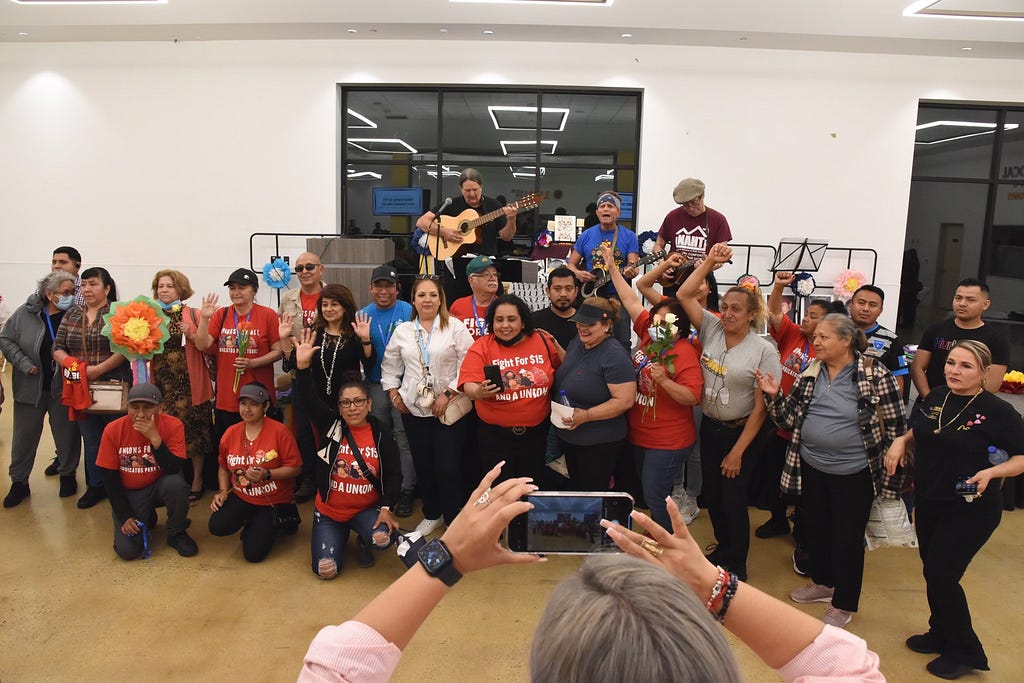 Members of gathered orgs pose for a picture with labor musicians Mike Stout and friends
Members of gathered orgs pose for a picture with labor musicians Mike Stout and friends
Over four hundred California workers per year on average die on the job. Those deaths are largely preventable if proper care is taken according to the law, yet many employers tragically fail to make the safety of their employees their top priority. Workers Memorial Day was established in 1970 by the American Federation of Labor and Congress of Industrial Organizations to honor those who have lost their lives, and to draw attention to ongoing hazards and issues that workers face day to day in hopes of preventing future deaths.
 An altar for the workers who have passed
An altar for the workers who have passedThis year, we wanted to highlight the amazing work in the South Bay with the opportunity to hold an in-person event that would honor the work of the many great community and worker based organizations in the South Bay such as Step Forward, the Mountain View Day Workers Center, the Vietnamese American Roundtable, PAWIS, WPUSA and the South Bay Labor Council.
An event of this nature takes a lot of work. Worksafe worked closely with Ruth Silver-Taube, who has worked tirelessly to coordinate many of the above South Bay organizations as well as the the Santa Clara County Wage Theft Coalition to ensure worker strength and empowerment during the pandemic to gather the above organizations to coordinate the event. It was a joy working together with these wonderful organizations to create a meaningful night.
It all came together beautifully on Thursday, April 28th at the Laborers International Union Local 270, decorated with flowers, photos of deceased workers, and posters sharing information about some of the hazards that have cost multiple workers their lives in the past few years. We had simultaneous interpretation in Spanish, Chinese, and Tagalog to make the event as accessible as possible.
We were honored to host several speakers, including Senator Dave Cortese, Jean Cohen, the Executive Officer of the South Bay Council, Alondra Hernandez from Fight for $15, Maria Marroquin from the Day Labor Center in Mountain View, Federal OSHA Oakland Area Representative Matt Kuzemchak, Cal/OSHA Chief Jeff Killip, Reema Jana from the National Domestic Workers Alliance, Jerome Shaw of the Unhoused Response Group, Cruz Yanez from SEIU-USWW, Rep. Zoe Logren’s Chief of Staff Esther Peralez-Dieckman, Assemblymember Ash Kalra’s Field Representative Juan Rodriguez (who awarded us an Assembly recognition for the event on Kalra’s behalf), Ellen San Felipe from PAWIS, and Dominic Torriano, Business Representative of Sheet Metal Workers.
 Maria Marroquin and Jora Trang accept the recognition from Juan Rodriguez
Maria Marroquin and Jora Trang accept the recognition from Juan RodriguezMany of our speakers very movingly shared their experiences with the challenges workers continue to face every day here in California, from employers stealing their wages, disregarding their injuries and attempting to get out of paying them workers compensation, to the struggle to survive on low wages while doing difficult and vital work on behalf of their communities.
Members of PAWIS prepared delicious Filipino food, which was enjoyed partway through the program, and we had some lovely union folk music provided by Mike Stout and friends throughout the night, which wrapped up the evening rousingly with much of the audience coming up to the stage, dancing and clapping and singing along to the chorus “We are the working class!”
 Mike Stout and friends
Mike Stout and friendsWorksafe attends “Dignidad: Domestic Workers’ Journey for Justice in California” screening in the Mission
by Karin Umfrey
A sea of voices chanting “si se puede!” A chorus of applause. An echo of booing to Governor Newsoms’ veto message. A lively jam of music and dancing. These sounds encapsulated the experience of the documentary viewing event held by the California Domestic Workers Coalition.
This event took place in the Mission District in SF at the Brava Theater, which has a rich history of supporting women and highlighting the artistic expression of women, people of color, and other underrepresented voices.
The line was out the door to get inside and take pictures with their sign before entering the theater:
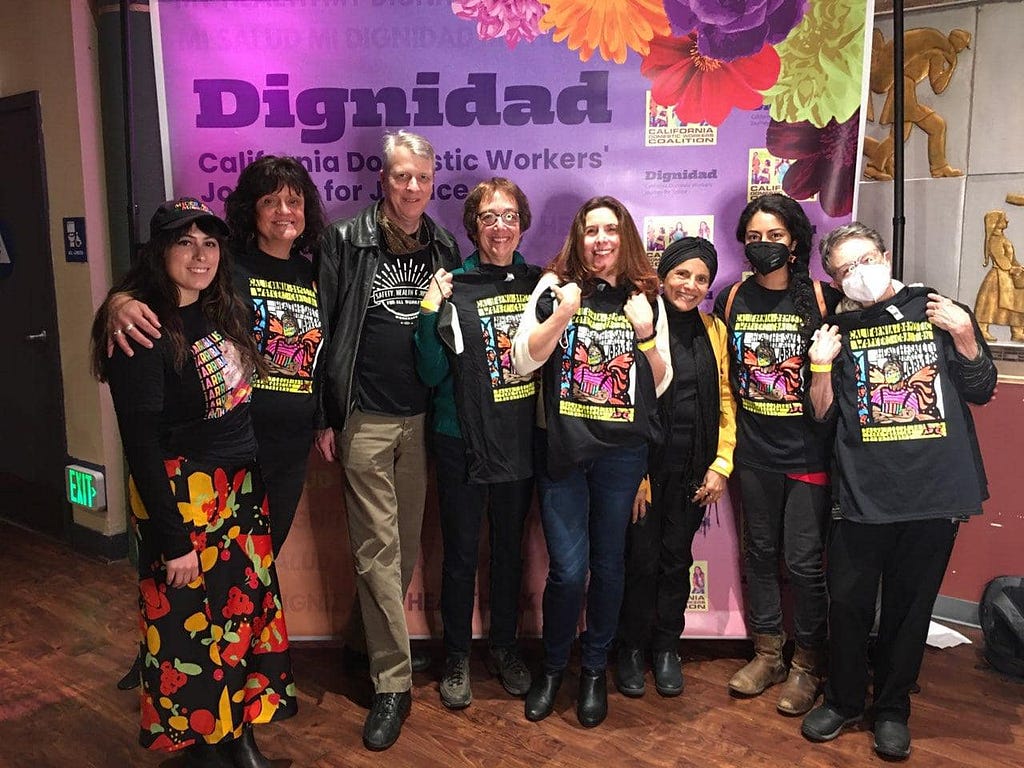 Worksafe staff and board members pose for a photo with the “Dignidad” backdrop & t-shirts
Worksafe staff and board members pose for a photo with the “Dignidad” backdrop & t-shirtsThe documentary, Dignidad: Domestic Workers’ Journey for Justice in California, is available on PBS, and we recommend that you all watch it here. This documentary takes a dense subject, the legislative bill cycle, and breaks it down to demonstrate the power of grassroots activism and the collective experience of domestic workers fighting for fundamental health and safety protections.
This event was meant to serve as inspiration for community members and organizations to get ready for the March 1 campaign launch in Sacramento. To sign up to join the campaign launch go to:
https://docs.google.com/forms/d/e/1FAIpQLSf_ldfrqqJfhqXfVO-oxGy7aR1YnaOBQvh92aOAUiTmDCzBVg/viewform

by Karin Umfrey
Domestic workers and day laborers in California have been battling Governor Newsom to remove the exclusion of household domestic services that keeps these workers from receiving the same fundamental health and safety protections as other workers in the state.
When the bill to remove the exclusion, SB 1257, passed the house and senate in 2020, Newsom vetoed it. The campaign continued in 2021, and again, his administration indicated its intent to veto the bill, at which point, the bill’s advocates decided to pivot to SB 321, a bill mandating that Cal/OSHA convene an advisory committee composed of domestic workers, day laborers, and academic OSH institutions to create voluntary guidelines to protect the health and safety of domestic workers and day laborers.
SB 321 was signed by Governor Newsom in 2022, and the advisory committee met, created the guidelines, and published them in January 2023.
This blog highlights a selection of these guidelines. To see the full guidelines, click here.
There are two main sections to the document: preventative steps, and general measures to protect workers in private employment.
Prevention
Prevention includes setting expectations on job duties, hours and pay, and putting them in writing. It also underlines the importance of ensuring that both employer and employee review and understand the workers’ rights. Employers should also identify, evaluate, and control hazards to prevent the injuries and illnesses that occur in the workplace. Workers should receive training on health and safety in a language they understand prior to working. Employers should also have a plan to address emergencies that can exist in the workplace like earthquakes, wildfires, chemical spills, workplace violence and heat illnesses. Finally, for prevention, employees should have access to bathrooms and washing facilities.
Common hazards and guidelines to protect workers
This is a very quick summary of some of the key recommendations, which cover areas ranging from workplace violence, heat and wildfire smoke to working from heights and ladder safety and electrical hazards. All recommendations include provided trainings, and some also include related PPE. Please visit the published guidelines to get the full recommendations by the advisory committee.
1. Chemicals
Cleaning or disinfectant chemicals may have short term or long term effects on one’s health. The voluntary guidelines recommend eliminating or reducing the hazard, for example, providing environmentally preferable cleaning products. They also suggest keeping a list of products and their labels, and reviewing the warnings and first aid information with the workers.
If the hazard cannot be eliminated, according to the guidelines, employees should also utilize engineering controls like fans, ventilation, and air filters to reduce chemical exposure, and finally, suitable personal protective equipment that properly fits the employee should be provided and utilized.
2. Musculoskeletal hazards: lifting, bending, repetitive motion and others
Musculoskeletal hazards are potential injuries that can happen to muscles, tendons, ligaments, nerves, joints, cartilage, bones, or blood vessels in the arms, shoulders, neck and back.
The guidelines have a list of risks for the employer to review with the worker that can help identify some of those hazards in the workplace.
The guidelines recommend that tasks given to the workers should be varied to avoid repetitive work, periods of rest should be observed, loads should be lightened, and tools and equipment provided to reduce the need for reaching, bending, or using too much force.
3. Lifting and moving adults or children while caregiving
Lifting adults or children can create a high risk for back injury and other musculoskeletal injuries. The guidelines recommend lifting assistance devices and an assessment to determine the correct equipment.
4. Slips, trips, and falls
Hazards that lead to slips, trips, and falls can cause bruises, sprains, and broken bones. The guidelines recommend walking through work spaces to identify and where possible, address hazards that could cause falls, like cords, curled or wrinkled rugs, mats, or carpets, oxygen tubing and other objects that block the worker’s path; like clutter, bedding and toys, and slippery floors.
5. Stress
Stress can be a physical, mental, or emotional strain or tension. Stress occurs when the mind and the body are overloaded with pressure and worry. Causes of job-related stress can include many issues, such as long hours, job insecurity, workload and pace, poor communication with the employer, harassment or bullying, insufficient breaks or hours, unpredictability of work, unsafe conditions, and more.
The guidelines recommend that employers check in regularly to assess whether the work plan is working well for both the employee and employer as a standard part of addressing and preventing hazards in the workplace.
Exclusion Pay is the Only COVID-19 Leave Program to Covers ALL California Workers, but Cal OSHA Decided Workers will no Longer Have it
by AnaStacia Nicol Wright

The fight for worker protections during COVID, much like COVID itself, continues: exclusion pay is in the current COVID-19 safety standard and has been included in past iterations as well; however, in response to pressure from the business community and other political powers, it will not be part of the pending 2-year non-emergency COVID standard.
For the past several months Worksafe and advocates such as the California Labor Federation, CNA, CRLAF, SoCal COSH, UFCW and many others have been appearing before the Cal OSH Standards Board to argue for exclusion of pay leave and protections. Many business advocates have also appeared before the standards board arguing that California has enough leave options to cover employees who would qualify for exclusion pay. They also contend that the exclusion leave protection provisions merely duplicates existing leave retaliation laws. But such an analysis is shortsighted.
Exclusion Paid Leave v. Supplemental Paid Sick Leave
Exclusion Pay and Supplemental Sick Leave are not the same. That’s the first thing you need to know about our calls to add exclusion pay into the Two Year COVID Workplace Standard.
The Emergency Temporary COVID-19 standard provided California workers with exclusion pay. Exclusion pay protects all employees (except for healthcare professionals, who are covered under the ATD standard) who are exposed to or catch COVID-19 at the workplace. An employee who contracts the virus outside of work and then comes into work and exposes their colleagues to the virus has now created an “at work exposure.” The person who obtained the virus outside of work likely wouldn’t qualify for exclusion pay under the standard, but their coworkers who were exposed to the virus would be.
COVID-19 Supplemental Paid Sick Leave, by comparison, provides for a total of 80 hours. 40 hours of which are only available to covered employees unable to work or telework due to any one of the following reasons:
- Caring for Yourself: COVID-19 isolation or quarantine, experiencing COVID 19 symptoms and seeking a medical diagnosis.
- Caring for a Family Member: The covered employee is caring for a family member who is either subject to a quarantine or isolation period related to COVID-19 or the employee is caring for a child whose school or place of care is closed or unavailable due to COVID-19 on the premises.
- Vaccine-Related: The covered employee or a qualifying family member is attending a vaccine appointment or cannot work or telework due to vaccine-related side effects.
Supplemental Paid Sick Leave only applies to employers with 26 or more employees. This means that employers with 25 employees or less are exempt from providing supplemental paid sick leave. Per Cal Matters in a February 2022 article, this exemption applies to more than 90% of companies in California and leaves at least one in four workers without access to the new paid leave law. Moreover, SPSL is set to expire at the end of 2022.
Do Californian Workers Have Other Paid Leave Options?
California requires employers to provide a minimum of three days of paid sick leave each year to full-time workers. However, three days falls short of covering the 5-day quarantine requirement for COVID-19 exposure. This sick leave requirement also only covers full-time workers. While data on the part time labor force is not easy to find, there are likely over one million Californians who work part time and thus are unable to access this minimal sick leave benefit.
Short Term Disability Leave (SDI) and Paid Family Leave (PFL) are additional paid leave options available to California’s workers. However, SDI and PFL do not provide job protection, only monetary benefits. SDI is only available for non-work related injuries and illness, and PFL is only available for workers in need of paid leave time to care for family matters, taking them both out of reach for COVID-19 related issues. To take advantage of either of these for a workplace infection would require lying to your employer. Don’t do that.
Are There any Other COVID-19 Leave Options Available for Workers?
Generally speaking, California companies do not pay you if you require time off after your paid sick leave options have run out. Additionally, not all unpaid leave qualifies as protected leave. Protected leave means that employers are prohibited from retaliating against you for taking leave. It also guarantees that when you return to work you are given the same or a comparable position.
If you have exhausted SPSL or you fall into the category of 90% of businesses who are not covered because they have 25 workers or fewer, you may be able to take unpaid leave under the Family Medical Leave Act (FMLA) or California Family Rights Act (CFRA). However, both of these leave options have huge gap areas where some of California most vulnerable workers fall through.
FMLA v. CFRA
The FMLA is similar to the CFRA, but there are key differences. FMLA applies to employers with 50 or more workers. This means that if your employer has 49 workers or less, then your employer does not have to provide you with FMLA leave. According to data from California’s Employment Development Department we know that 90% of California employers have less than 25 employees. That means that a significant percentage of California workers are excluded from taking unpaid leave to recover from COVID-19 under FMLA protections.
CFRA provides more protections for California’s workers suffering from COVID-19 than FMLA because it applies to workplaces of 5 or more employees. Employees who qualify have access to 12-weeks of unpaid protected CFRA leave for:
- Birth of child (“baby-bonding”)
- Adoptive- or foster care child placement
- Caring for covered family member with serious health condition
- Personal serious health condition (not including pregnancy)
- Qualifying military exigency
Ostensibly, CFRA coverage could appear to be a good replacement for exclusion pay in terms of job protection, at least, because workers exposed to COVID at work would qualify under prong 4.
However, such an assumption is short sighted. According to California’s Employment Development Department, CFRA excludes 74% of California’s work establishments, which have less than five employees, employees must have one year of employment with the company and 1250 hours of work in a year (or 24 hours a week), and the employer can use different calculations to minimize coverage available to their staff.
Even if they meet the requirements for CFRA or FMLA, many workers need this option for other eventualities, like giving birth to or adopting a child, tending to a spouse or child with COVID-19, etc. Add to that the likelihood of catching COVID-19 more than once, and it’s clear the current protections are entirely inadequate.
Are Workers Protected Against Retaliation for Taking Leave Due to COVID-19?
Many business-side advocates say that California laws prohibiting retaliation already protect workers against retaliation due to COVID-19. California does have various anti-retaliation protections. But the existing ones leave gaps in application.
While it’s true that paid sick leave laws prohibit retaliation, they only explicitly protect “accrued increments of compensated leave provided by an employer to an employee…for use…during an absence from the employment.” In other words, unpaid leave does not fall under this category. As such, the language in Labor Code Section 233 and 246.5 does not provide retaliation protections to employees who have exhausted their accrued time and are left only with unpaid time off.
AB 2693 — COVID-19 Notification and Reporting states that an employer shall not retaliate against a worker for disclosing a positive COVID-19 test or diagnosis or order to quarantine or isolate. Workers who believe they have been retaliated against in violation of this section may file a complaint with the Division of Labor Standards Enforcement.
Yet, this provision is vague enough to leave confusion as to who it actually protects. Does it only apply to paid sick leave and protected unpaid sick leave? Or is it available to workers with no protected leave? It also begs the question if it protects the actual time an employee is absent from work due to a COVID-19 exposure or if it only protects retaliation against the actual disclosure. I’d argue this provision protects only the latter and does not actually prohibit employers from implementing attendance policies that would limit the ability for a worker to access unpaid leave and face potential consequences as a result. This may seem like “splitting hairs’’ but it is inside these gaps where lawyers earn their keep. This provision’s lack of clarity leaves too much room for misinterpretation by employers.
In other words, the COVID-19 Notification and Reporting rule doesn’t “protect” workers, it forces them to litigate what the law means. That is hardly a protection. And while employees may seek redress through the administrative and judicial processes, in the meantime they’ve been fired. The provision also ends on January 1st of 2023. The language of the COVID-19 ETS did away with any of the aforementioned confusion and provided protections for two years after January 1st, 2023.
How was the Language in the ETS Different?
The language we are asking to be retained from the COVID-19 Emergency Temporary Standard does more than just protect against retaliation. It requires employers to maintain the exposed employee’s earnings and benefits if the excluded employee is unable to work due to exposure to COVID-19 at work.
During the pandemic, workers without this protection may fail to meet the minimum hours requirement to maintain their worker-provided healthcare not only for themselves, but for their entire family as well. COVID has caused additional problems for newly hired workers who are on provisional status. Because these workers aren’t provided with leave options until their provisional period expires, they risk getting fired if they stay home due to COVID-19.
Another equally important difference is that the ETS language required workers who were forced to stay home due to workplace COVID-19 exposure. Excluding exposed workers from the workplace is imperative to the safety of the general public and workers, especially ethnic minority workers. In fact, Studies have shown that “68 percent of COVID-19 deaths during the first year of the pandemic were adults in low socioeconomic positions employed in labor, service and retail jobs that require on-site attendance and prolonged close contact with others.”
These employment sectors are routinely filled with black and brown workers. This means that, if they live through COVID-19, a disproportionate amount of Latino and Black workers who will be exposed at work and excluded because of that work exposure will lose one week or more of wages. That’s one week’s worth of rent they won’t have, one week’s worth of food they can’t buy, one week’s worth of hours to qualify for medical insurance that they can’t accrue, one week’s worth of tuition they can’t pay.
Ensuring that workers will receive their regular rate of pay during that time is a critical component. The proposed 2 year COVID-19 standard will still require exposed workers to be excluded, but unpaid. There is a precedent being set here and it is very troubling: public health exclusion without job or pay protection.
How do Workers Fight Back?
In a world where people are contracting COVID-19 multiple times in one year, where vaccines are far from 100 percent effective and many people refuse to vaccinate, where long COVID is depleting the health and capacity of many workers, the current legal provisions for leave just aren’t enough.
The COVID-19 Emergency Temporary Standard addressed these gaps in leave coverage by providing its own separate COVID-19 leave pay and protections. Without exclusion pay, many workers are left without any paid or protected leave options. Yet despite all this, the California Division of Occupational Safety and Health is removing exclusion pay from the 2-year COVID Standard. In doing this the Division explicitly undercuts the Occupational Safety and Health Standard Board request that exclusion pay and protections be reincorporated.
Although we’ve lost the battle for exclusion pay in the 2 year COVID-19 standard, the war is not over. The Division of California Occupational Safety and Health is currently drafting the permanent COVID-19 (and other viruses and diseases) standard for general labor industries. Now is the time to begin raising our voice, telling our Cal/OSHA, our legislators, news reporters and anyone who will listen that we demand exclusion pay and protections be included in the general industry standard. We can begin mobilizing our families, neighbors and community members so that we are in a position to launch a strong assault of an administrative body in favor of skirting workers safety for the sake of business’ profits.
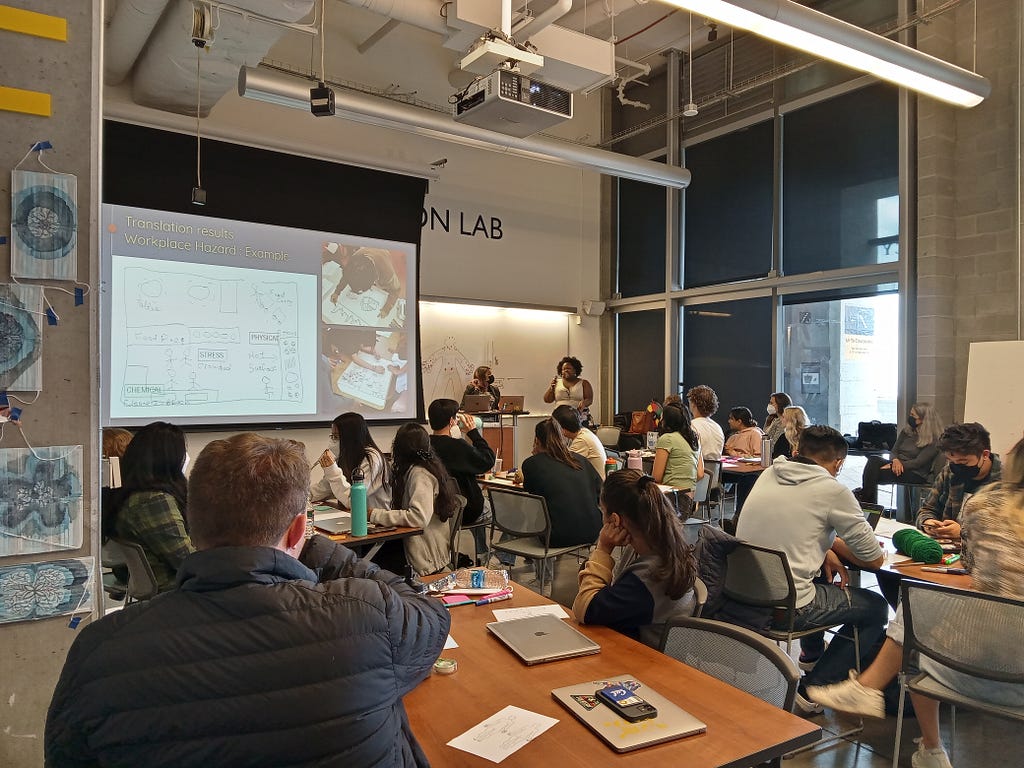
by Lucy Morales and Rachel van Geenhoven
One of Worksafe’s roles in the community is to provide trainings to workers experiencing Occupational Safety and Health (OSH) issues in their workplace. We design our trainings using popular education models which center accessibility for the broadest possible range of literacy levels, exposure to technology, etc. During these trainings, workers learn how to identify illegal hazards and advocate for safer workplaces.
Worksafe was excited to have been invited last semester to participate in a Community-Engaged Labor Studies Course at UC Berkeley, which seeks to address the complex and intersecting problems of the world through innovative collaborations between multiple disciplines, sectors, and communities. Students were required to complete a small-scale project to support the work of the various community organizations participating in the class, each of which created a video “marketing” their cause to the students. We decided to ask students to create a popular education training for the Day Laborer Comité, a group which is collaborating with Worksafe through a grant from the California Department of Public Health.
Four students expressed interest in our project, and as the CDHP project coordinator, I was responsible for leading the cohort, teaching them about the project and the worker comité, answering all of their questions, and guiding them as they created a training. We started by presenting students with several training topics in which the comité members had expressed interest, and the students decided to put together a virtual presentation on Civic Engagement and Policy Advocacy.
I was also tasked with helping the entire class better understand the popular education model. Worksafe Staff Attorney AnaStacia and I led the class through Worksafe’s OSH training using a train-the-trainer format, with students working to understand the purpose and methods of the training rather than simply receiving and incorporating the information. Students were able to identify several OSH hazards they had experienced in various jobs they’ve held, which helped to ground their understanding of OSH hazards. We were also interviewed by a different group of students to learn more about the training.
Throughout the spring, I was in close contact with the team working on our project, answering questions, providing feedback and guidance. Before I knew it I was back in the classroom to see what they came up with. I knew Berkeley students were smart (I mean our Chief of Staff and Equity Jora is a Golden Bear herself)… but these students truly blew me away. Their final project used various tools they learned in class including a systems map, stakeholders map, a team asset map and interviews to put together an interactive and thorough presentation sure to engage the workers.
A few weeks later, I led the comité through the popular education models and exercises the students put together, and as expected, the workers came out of it understanding the importance of civil and policy advocacy–including the ones who couldn’t access the visual presentation. Everyone participated and the comité leaders left feeling empowered and ready to advocate for policy changes with the state and CDPH.
In short, our collaboration with these students was deeply rewarding and reciprocal, and we’re so excited to do our part to create a new generation of advocates and community leaders!

by AnaStacia Nicol Wright
The world can seem like a scary one ever since the onslaught of Covid-19, especially for employees working in public-facing sectors, and now monkeypox has been declared as a public health emergency of international concern by the World Health Organization (WHO). So far there is very little being said about precautions to protect the public, and no one is talking about workers.
What do you need to know about this new pandemic? What are your rights in the workplace?
What is Monkeypox?
Monkeypox first emerged in the 1970s but seemed to have all but disappeared from the “developed world” but in 2022 it busted back on the scene (literally–monkeypox typically appears as bumps and pustules forming amidst a rash). It is spread by skin-to-skin contact and through droplets from face-to-face interactions with an infected person.
- direct contact with the infectious rash, scabs, or body fluids
- respiratory secretions during prolonged, face-to-face contact, or during intimate physical contact, such as kissing, cuddling, or sex
- touching items (such as clothing or linens) that previously touched the infectious rash or body fluids
- pregnant people can spread the virus to their fetus through the placenta
However, Dr. Rosamund Lewis with WHO said that in addition to these, “there may be some new things happening in this outbreak now. We don’t know everything. There’s still a lot to learn”.
Luckily, monkeypox is rarely fatal. Symptoms of monkeypox can include:
- Fever
- Headache
- Muscle aches and backache
- Swollen lymph nodes
- Chills
- Exhaustion
- A rash that can look like pimples or blisters that appears on the face, inside the mouth, and on other parts of the body, like the hands, feet, chest, genitals, or anus.
While this doesn’t mean you should think every rash or ingrown hair is monkeypox, you should always consult with your doctor if you have symptoms or concerns.
Which Workers are Most at Risk?
Because the virus is mostly spread via skin-to-skin contact, WHO states that workers most at risk are those in healthcare. However, in being proactive we should think about all workers who may have skin-to-skin contact. This includes non-medical staff working in nursing home, child daycares, adult daycare centers, sex workers, and all other positions where employees are likely to have direct person-to-person skin contact.
Can Monkeypox Be Treated?
Monkeypox has been around for awhile. It was “discovered” in 1958 and first appeared in humans in 1970. Luckily, scientists have had time to test and experiment with it, and there is a vaccine. In addition to the JYNNEOS vaccine, which has been approved by the U.S. Food and Drug Administration (FDA) to prevent both smallpox and monkeypox (and found to help protect against monkeypox if given before or shortly after an exposure), there is evidence that smallpox vaccines may be effective against the virus — because they are similar in their biological makeup.
Okay, What’s the Risk to Workers?
There’s never been an outbreak of monkeypox like we’re seeing today. The rapidity with which the virus is spreading is concerning to scientists. Furthermore, science is still learning about the virus, how it transmits, and its effects. Dr. Rosamund Lewis with WHO says that, “Most people who have monkeypox do not become very ill. However, WHO has described the risk as moderate because monkeypox is spreading in locations where it has never been reported before.”
Our purpose here is not to be alarmist. The spread of monkeypox does not, at present, appear to be aerosol like COVID-19, and there are vaccines which should be effective. However, as we’ve seen with COVID-19, rapidly spreading viruses may also mutate to become more deadly, more transmissible and even untreatable. Being proactive, identifying who is at risk and implementing preemptive measures is crucial for containing this virus. COVID-19 was approached in the opposite way and we’re still reeling from those decisions to this day. We don’t need to wait for another tragedy to teach us to take pandemics seriously.
How Strong Policy and Laws Can Help Workers
This seemingly random uptick in monkeypox further illustrates how imperative workplace protections such as the Emergency Temporary Standard for COVID-19 (ETS) and the Aerosol Transmissible Disease Standard (ATD) are. We’ve been warned that we will only see more and more pandemics in the coming years, and for another to arrive so quickly on the heels of Covid ought to really drive home how urgently we need a general industry ATD in place before we’re running around, desperately trying to protect workers as we’re hit with virus after virus after virus. Furthermore, while the ETS does not explicitly include protections for anything besides COVID-19, its protections can be easily adapted if prophylactic measures are already in place.
Please check the California CDC, CDC and WHO websites for information on monkeypox, how it spreads, how to identify it, who is at risk, and how to most protect yourself.

By AnaStacia Nicol Wright and Rachel van Geenhoven
The Last Day on the Job
On Mother’s Day of 2022, father and son hit the road on their motorcycles and headed over to Smokin Joe’s Trading Post on the Tuscarora Indian Reservation. Perhaps they were trying to grab a last minute present or some coals to get the grill started or maybe they just went on an aimless joyride to spend some time together on the open roads. No matter what their plans may have been they were halted upon arriving at Smokin Joes because the father’s bike gave out. And, as fathers tend to do, he refused to call AAA, Geico or Uber. Instead he tinkered around under the hood of his bike before looking up and scanning the area and saying to his son how all he needed to get this bike up and on the road again was a piece of wire.
This was how Aaron Salter II and his namesake spent Sunday, May 8th, 2022, before another Smokin Joes patron gave them a jump start- although Aaron Salter would have preferred a good ole wire. While they labored in the warm New York sun on the Tuscarora Indian Reservation, neither father nor son knew that this would be the last weekend they spent together. Six days later, Aaron Salter II, father, deacon, motorcycle MacGyver and Tops security guard walked into work at Tops Friendly Market in Buffalo, New York, for the last time. That day he and 10 others would lose their lives to an anti-Black racist lone shooter.
Eva Miereles and Irma Garcia had both spent 17 and 23 years, respectively, working in education. On Tuesday, May 24th they were both working at Robb Elementary School in Uvalde, Texas. Eva was likely looking forward to calling her daughter at 4:30 pm after school, like she did every work day. But on this Tuesday, her daughter didn’t get a call from her mom and she never would. Irma was probably running through the summer plans for her two minor daughters Lyliana, 15 and Alysandara, 13 while simultaneously preparing her students to end their own school year. Unfortunately, Irma wouldn’t ever know how any of her kids spent their summer vacations because a teenager with a gun walked onto the Robb Elementary School campus and killed twenty-one people; nineteen 4th graders and two teachers- Eva Miereles and Irma Garcia.
Columbia Machine manufacturing company in Smithsburg, Maryland was likely buzzing with activity at 2:30 pm on Thursday, June 9th, 2022. Employees were probably trying to wrap up their last minute projects and preparing for their end of day Friday plans. But Friday would never come for 3 of these workers- Mark Alan Frey, 50; Charles Edward Minnick, Jr., 31 and Joshua Robert Wallace, 30, because a man with a semi-automatic weapon walked in and opened fire.
What did Aaron Salter II, Eva Miereles, Irma Garcia, Mark Alan Frey, Charles Edward Minnick, Jr., and Joshua Robert Wallace all have in common? They all lost their lives to violence in their workplace. And all of their deaths might have been prevented if businesses throughout the nation were to adopt a Workplace Violence (WPV) Standard.
What is a Workplace Violence Standard?
Wait–let’s take this back a step. What is a standard? According to the Federal Occupational Safety and Health Administration (OSHA) website:
OSHA standards are rules that describe the methods that employers must use to protect their employees from hazards.
Long ago in our nation’s history, in response to terrible working conditions and workplace tragedies that resulted in the loss of many lives, workers and the general public fought for the government to hold employers accountable for creating safe conditions for their employees, including taking steps to prevent foreseeable tragedies.
More recently, the prevalence of violence in the healthcare industry, which sees the highest rate of workplace violence out of any industry, inspired the creation of a Workplace Violence Standard mandating measures to protect healthcare workers from experiencing violence on the job.
But the healthcare industry isn’t the only industry that sees high rates of workplace violence, and it is far from being the only industry where workers are vulnerable to experiencing violence on the job. And the most vulnerable, as per usual, are often the lowest wage workers. Which makes this an important issue for anyone who seeks to create a more equitable, fair, and safe world for all workers.
For this reason, Worksafe and other workers rights, health and safety advocates are seeking a general WPV standard in California so that employers everywhere take the necessary steps to assess the risks faced by their employees, adopt protective measures, and document, evaluate and adjust those measures for effectiveness in the wake of incidents.
Worksafe’s Recommendations to Improve the General Standard
The language of the General WPV Standard is currently under review, and Worksafe has been working together with colleagues and allies to ensure that the General Standard will be effective in protecting workers. Some of our key recommendations include:
Ensuring that all workers are provided with their company’s workplace violence prevention plan upon employment;
Expanding the definition of Workplace Violence to ensure that workers are protected from harassment, stalking, and other forms of threat to their safety that do not involve a threat of physical injury but entail psychological trauma or stress and cause workers to fear for their safety;
Ensuring that the incident reporting requirement includes incidents of violence such as sexual assault and other physical assault that doesn’t result in lasting injuries — so that the preventative measures against these kinds of things are also routinely evaluated for effectiveness, and improved where necessary;
Including provisions for an active shooter scenario as a general standard for all workplaces, and mandating that employees be allowed to carry cellphones on them as one measure to ensure a faster emergency response should a shooter enter a workplace.
How You Can Help
Despite the fact that interpersonal violence and domestic violence occur at high rates in the workplace, and mass shootings, for example, are almost always occurring in places where employees are required to present, Workplace Violence is not a highly visible, well-known, or much discussed issue in the public forum.
Help us spread the word. An increase in public awareness and understanding could go a long way towards underscoring the necessity of a general industry standard and motivating our governing bodies to prioritize it.
Towards Better Outcomes
As we take steps to reduce the risk of active shooters, protect women from domestic violence, and generally address the phenomenon of interpersonal violence nationwide, we must not neglect to focus on the workplace. As we mourn the lives so senselessly lost, we must also fight like hell to protect the people we can protect: the workers who will face similar threats in the coming days, whose lives might be saved by some foresight and planning on the part of their employers.
Since Cal OSHA last entertained creating a general industry workplace violence standard there have been multiple workplace shootings that resulted in over 1000152 fatalities and injuries nationwide. Workplace violence may seem far removed to many readers. It’s something that happens to an individual, usually as a result in an interpersonal conflict that person faced. But often it’s impersonal-whether a disgruntled coworker who turns violent upon learning they’re fired, a member of the public airing their frustrations as a protest against COVID measures (during the pandemic we saw and continue to see violence against frontline workers in response to mask mandates), or –unfortunately an increasingly common event– a mass shooting.
Think of all the venues where such mass shootings have occurred: in movie theaters, malls, schools, restaurants, house parties, grocery stores, marathons, parades, colleges. These were all someone’s workplace. These are the places our best friends, spouses, and teenagers work. These are places we work. The randomness of these attacks, combined with the increasing nature of this type violence points to a need to be sure we are most prepared in the places we spend most of our time: at work.
Remember Buffalo. Remember Uvalde. Remember Smithsburg. These are instances of workplace violence.
Remember Aaron. Remember Eva and Irma. Remember Mark, Charles and Joshua. They are the faces of workplace violence.
Remember your loved ones. Remember you. Remember me. We are all the possible next victims of workplace violence.
Mass shooters, terrorists, who unloaded rounds of ammunition at someone’s workplace did not just take the lives of patrons and those in attendance. They took the lives of the employees who had to be there. And, maybe, with the right protections in place their violence could have been prevented or mitigated. The revisions proposed by Cal OSHA will go a long way toward ensuring that all workers have the needed support to enforce their rights under this proposed standard.
Sources:
- 21 lives lost: Uvalde victims were a cross-section of a small, mostly Latino town in South Texas
- 3 people died in a shooting at a Maryland manufacturing facility, officials say
- Table 2. Fatal occupational injuries for selected events or exposures, 2016-20

Worksafe submitted comments to OSHA last week urging the reinstatement of the previous requirements which mandated employers to submit and post electronic records of specific incidents and injuries in the workplace.
These are records employers are already required to maintain. Our comment letter points out that this doesn’t add to their burden, as they’re already required to keep records of injuries and incidents that occur. Submitting them by mail is not easier, it just delays things and allows for gaps in accountability. Online submission goes a long way towards holding employers accountable to keep their employees safe, allowing employees to respond effectively when they fail to do so, and helping job seekers select employers who prioritize their safety.
This has been proven to increase worker safety. We offered four examples in our letter of how online reporting of incidents has contributed to increased worker safety in the past, from worker leaders being able to bring a body map to Tyson to demonstrate how often workers were injuring their hands, to workers at an auto parts plant demonstrating that individual complaints of rashes over the years added up to a significant problem.
Claimed privacy concerns have a clear answer: technical privacy experts. While employers may have a genuine worry about private information getting released, this is not a valid reason to forgo publicly available reports, as OSHA can easily consult federal services that exist for the express purpose of protecting digital information.
Employers who discourage their workers from reporting incidents must be penalized. This is a documented phenomenon that will likely increase with the new public transparency unless there are enforceable and strong prohibitions, which we encourage OSHA to undertake as well.
Some who object to this reinstatement suggest that it somehow violates the First Amendment, which has been held to restrict when the government can force a company to publicize information, such as when the people have a clear interest in the information and it’s not unreasonable to ask. As previously stated, accurate, timely, publicly accessible reporting has been shown to increase worker safety, and it is not a great additional burden to electronically submit information that has already been collected, so this argument can be put to rest.
We were glad to partner on these comments with Democracy Forward, which “uses innovative legal advocacy, expert counsel, and amplification of community voices to fight for a bold & vibrant democracy for all people.” We encourage you to check out the work they are doing and support them in their mission!
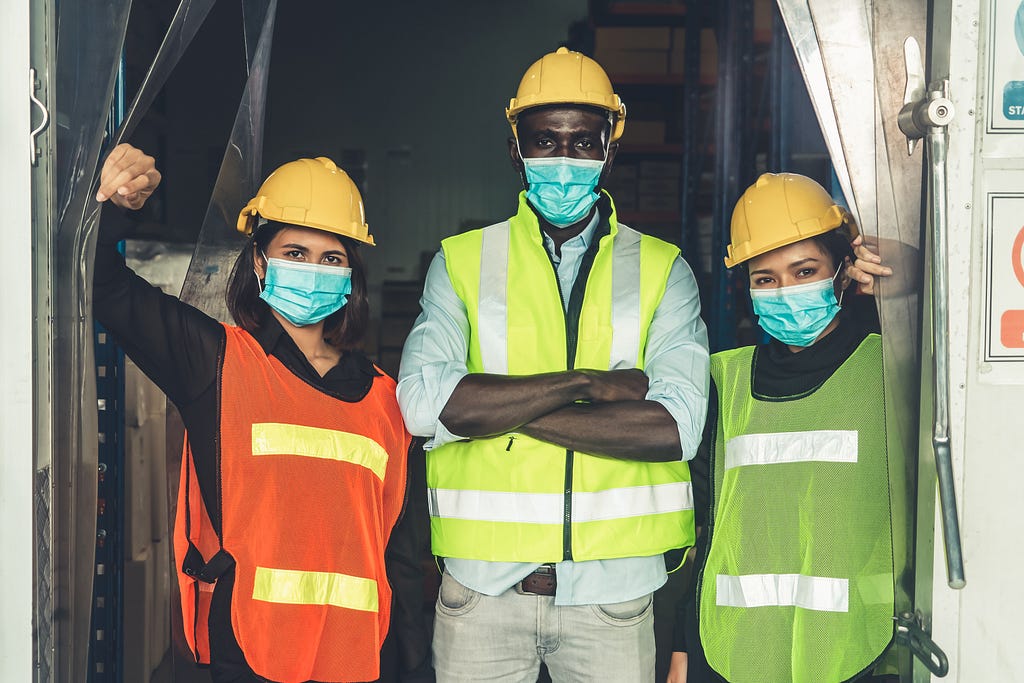
Californians have the strongest protections from COVID at work in the country. At the same time, there’s lots of room for improvement. Put in place by Cal/OSHA and the Occupational Safety and Health Standards Board, these rules will be in place until the end of 2022.
So what are the main things California workers need to know?
- There must be a COVID-19 Prevention Program at your workplace. It should be in writing and available. Employees are to be trained on COVID prevention.
- You and/or your union (if you have one) can bring COVID-19 hazards in the workplace to your employer’s attention to be fixed. The employer needs to evaluate and address how COVID could spread in the workplace, and to stay up to speed on public health advice from the state.
- When face coverings are required (which as of end-May they are not), the employer must provide them. Face coverings, improved ventilation, and some other measures in the rule depend on what the state Department of Public Health is recommending for the general public, rather than anything specific to workers.
- If you or a colleague gets COVID on the job, you are to stay home (be “excluded”) from work. You must be paid and you retain your “earnings, wages, seniority, and all other employee rights and benefits” until you are well and can safely return. (this is called “exclusion pay.”) If your boss claims you weren’t infected at work, the burden is on them to demonstrate that.
If there is a positive COVID case at your place of work, your employer needs to investigate the circumstances and individuals who may be affected, notify them, and offer COVID testing. There are specific protections on shared housing and transportation for farmworkers.
Are you not seeing your employer not doing these things, or do they not care about you and your colleagues’ safety? You can file a complaint with Cal/OSHA. This can lead to an investigation and enforcement, including fixing the problem and levying fines.
The main rule is here if you want to read it yourself, and there’s lots of FAQs and more information here at Cal/OSHA’s page.
Things get more involved if there are three or more cases at your workplace in two weeks (an “outbreak”), or 20 cases in a month (a “major outbreak”) — including notice, investigation, testing and ventilation.
Please keep us posted on what you are seeing in your workplace. Because efforts to establish longer-term protections are ongoing — and being strongly opposed by business and industry.
At Worksafe, we are devastated by the tragedy that took place in Uvalde, Texas, this week.
by Thais Forneret
Another mass shooting in the United States. Another school mass shooting in the United States. Nineteen children — second, third, and fourth graders — were murdered. Two of their teachers were shot down as well. Another. Mass shooting. In the United States.
How many more people need to die in order for us to take action?
Those teachers — those workers — went to their workplace in the morning and did not return home safely at the end of the day. Many parents sent their little children to school that day, to never see their children alive again. It could have been me. It could have been you. It could have been your child(ren). It could have been your friend, your relative who lost their lives so tragically.
Just recently there were mass shootings in New York and here in California and also in Wisconsin, which added up to almost 200 mass shootings that took place in this country this year. It’s not yet June.
We are not going to ask you for thoughts and prayers. Though thoughts and prayers are good, we need action. So we ask you to write to your elected officials and demand that they pass gun safety regulations. We stand with you, and we will keep calling and writing, advocating for change in this country’s society, culture and laws, until we transform into a safer and more just community.
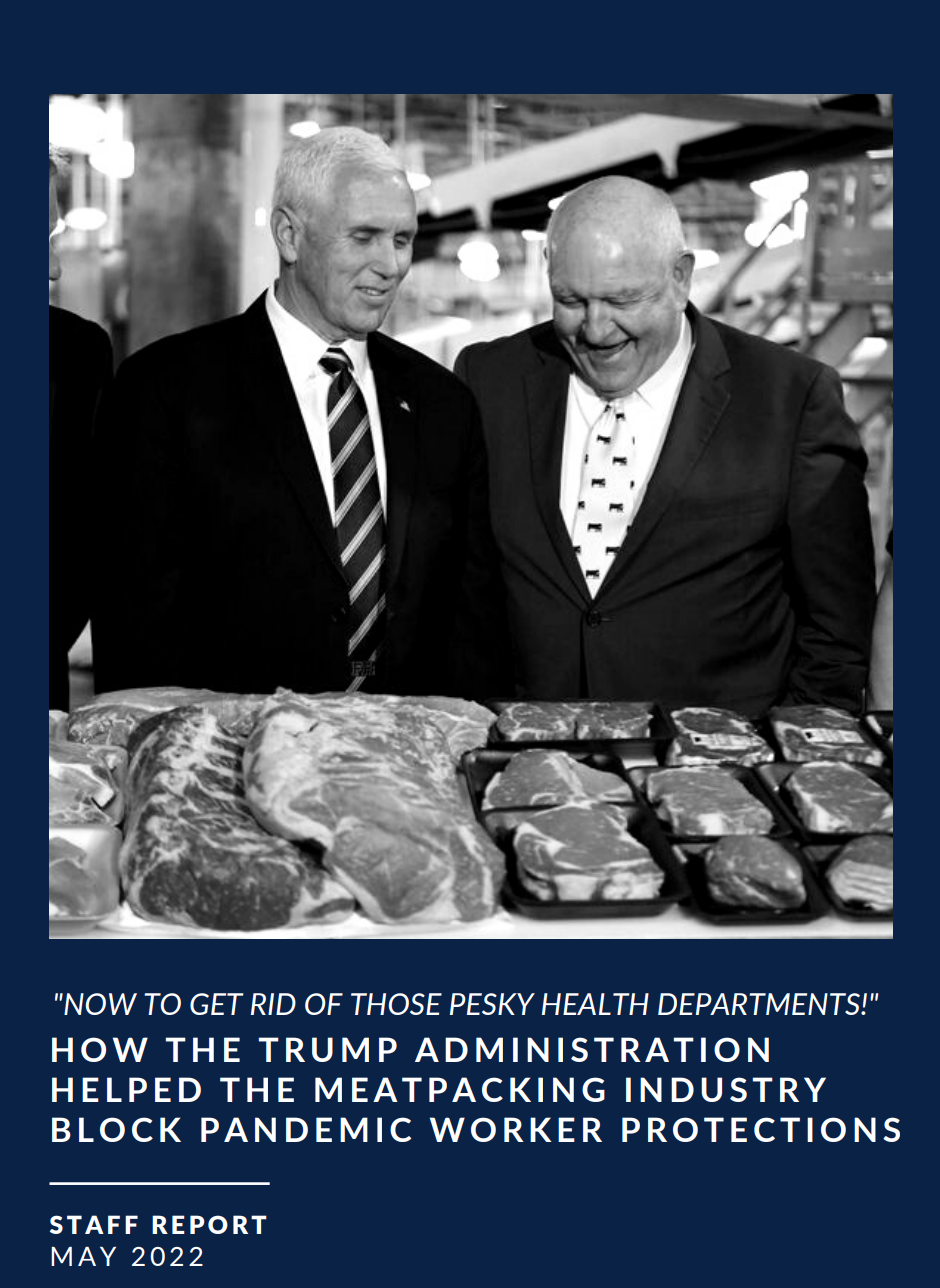 Not funny
Not funny
by Stephen Knight
Congress has issued a report on the collusion between the US Department of Agriculture and the meatpacking industry, early in the COVID-19 pandemic, to block necessary protections for workers and keep their dangerous plants open. The report is titled: Now to get rid of those pesky healthy departments!
As with so many Trump-era outrages, it seems that a lot of what happened was apparent at the time. The industry immediately knew of the extreme risk to their workforce. A 2020 lawsuit disclosed that managers at a Tyson plant placed bets on how many of their employees would get the deadly disease. And “company executives intentionally stoked fears about meat shortages in order to justify continuing to operate the plants under dangerous conditions.” In response to the sham meat shortages, the administration invoked the Defense Production Act — a measure it “had refused to use… to help the victims of COVID-19.” Hundreds of workers died.
The Congressional report documents anti-worker safety collusion between some of the wealthiest and most powerful entities in the nation: federal Cabinet officials and near-monopoly corporate interests. Here in California, Foster Farms executives identified COVID-19 worker protections as an obstacle to their profit making. Federal officials leaped to intervene against the workers, and to “intimidate” public health officials trying to protect their community in Merced County:
By May 2020, meatpacking companies and political appointees at USDA were regularly attempting to stifle regulatory attempts by state and local health authorities in order to force plants to stay open despite coronavirus risks. For example, on May 15, 2020, an industry representative emailed Under Secretary Brashears, Under Secretary Ibach, and their respective deputies a document containing “new CA guidance,” noting that it said to “Practice six-foot physical distancing to the greatest extent possible” and highlighting in yellow a clause saying: “even if this means production slows down.” Without first asking whether or why the representative took issue with this document, Brashears responded saying, “We will discuss ASAP and get back to you.” Later that day, the representative emailed other trade associations, saying that she was “on the phone with USDA” before noting that the California guidance was “Not consistent with USDA expectations and the OSHA/CDC guidance or the EO,” referencing OSHA/CDC guidance for meatpacking plants and an executive order that, as explained in Sections III(b)(iii) and (v), were shaped heavily by meatpacking companies.
…
A particularly stark example of meatpacking companies’ use of USDA political officials to strong-arm state and local health departments occurred in connection with attempts by California’s Merced County Department of Public Health (MCPH) to address a coronavirus outbreak at Foster Farms’ Livingston, California plant that left at least 392 workers sick and eight workers dead. Previous reporting disclosed that MCPH officers received outreach from federal officials telling them they could not shut down the plant after a health order was issued that would have required a suspension of operations. Internal documents received by the Select Subcommittee, as well as survey calls with MCPH officials, now confirm that Foster Farms used USDA to intimidate MCPH and to try to stop MCPH from shutting down the plant.
There is a town hall meeting in Livingston on Sunday May 29 at 1:30p at the Sikh Gurdwara Livingston, 2765 Peach Ave., to share the Congressional findings with the community.
This violation of public trust by government officials and contempt for employee safety by corporate interests is deeply disturbing. And unless there is accountability for this behavior, it is likely to happen again.
by Karin Umfrey

Wake up in the morning, step outside for that morning walk, and you realize — the sky looks hazy. Due to pollution, this seems a more common reality. But when it’s wildfire season, the air quality is so much worse.
In California, there are groups of folks particularly vulnerable to this exposure: unsheltered residents and outdoor workers. Outdoor workers are especially vulnerable due to the type of work they do and chronic exposure to unhealthy air quality. With chronic exposure, workers may develop more vulnerability such as asthma that can then make them more susceptible to heart and lung conditions at lower air quality levels than before.
Worksafe supports three related bills that would support farmworkers in wildfire zones: AB 2847, AB 2538 and SB 1044. This work comes out of our years of advocacy for worker protections from wildfire smoke and advocacy with our powerful coalition partners North Bay Jobs with Justice, Lideres Campesinas, MICOP, CAUSE, and CRLAF at both the state and local levels.
AB 2847 creates unemployment benefits for workers who are excluded currently from unemployment due to their immigration status — called the “Excluded Workers Pilot Program.” Also, the bill requires the Labor Workforce Development Agency to make recommendations for establishing a permanent program. The purpose of this program is to provide relief to immigrant communities who were impacted hard by the COVID-19 pandemic when job losses occurred due to businesses closing. Californians excluded from unemployment benefits exhausted their savings and incurred debts to pay for the costs of housing, childcare, food, and other basic needs.
AB 2538 would create a wildfire notification system. Surprisingly California lacks a notification system on wildfires or any uniform published information on when a zone becomes a mandatory evacuation zone. For example, there was a wildfire that just broke out in Orange County — and workers in wildfire zones did not get a uniform message. News coverage, radio, and more can inform people, but if they only have their phones on them while working, they may not get the information. With an alert system, the phone should notify them of the danger in the area.
However, the bill should be stronger to address language access justice. Because most farmworkers do speak indigenous languages as their primary or only language, there should be amendments to the bill to include this and a plan of action so it is implemented. For example, MICOP (Mixteco Indigena Community Organizing Project/Proyecto Mixteco Indigena) is working with Ventura County on an indigenous language smoke alert system using audio messages.
Finally, SB 1044 is limited to apply in states of emergency that pose imminent and ongoing risk of harm to a workplace. After notifying the employer of the emergency condition leading to their inability to report, workers would be protected from an employer threatening adverse action or taking adverse action.
It would also require employers to allow workers to have access to their phones and would allow workers to leave the premises if they must do so for their safety. For example, with that alert system bill we just discussed, how would the workers know unless they had their phones?
When the Getty Fire raged through Los Angeles, it was domestic workers and landscapers who continued to enter evacuation zones to work. During North Bay fires, the counties granted passes to agricultural employers to send workers into smoke-laden fire zones to protect the crops, even while homeowners were advised to flee.
These state proposals are coming forward as Sonoma County is in the midst of deciding whether or not they should implement an Ag Pass Program rather than continuing with no oversight over employers during wildfires. Because agricultural workers in Sonoma County have faced significant health and safety issues, they have been ready and mobilizing to protect their lives.
Some of the protocols that should be implemented are “Disaster Paid Not Worked” so that an employee can choose not to work in a mandatory evacuation zone. When people are not paid, they tend not to take leave. It’s extremely difficult in California, especially if you are a low wage worker, to miss any work and still pay your bills on time. Justice requires a language access protocol so that the employees can receive evacuation and safety training in their primary or native language. There are many community-based organizations that are ready and available to assist with this in Sonoma. North Bay Jobs With Justice and others advocate for hazard pay for work in mandatory evacuation zones.
Sonoma County is in a moment where they can do something — advance a program to protect workers and create accountability for employers that want people to work in mandatory evacuation zones. While statewide rules would be great, the reality is that it takes time for the legislature to pass bills that address the problems all of California constituents and workers are facing. In the meantime, local governments have the authority and power to step in and protect the workers who are in their counties until that moment can happen.
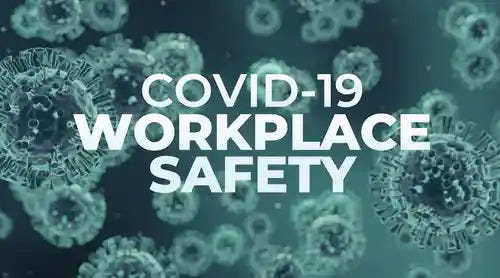
The current Emergency Temporary Standard (ETS) for COVID-19 is set to expire on May 6th. A meeting on April 21st at 10am will determine whether it gets re-extended, and whether the requirements/restrictions will be relaxed or remain the same.
Business interests want to end the ETS and replace it with California Department of Public Health (CDPH) guidance and the general Injury and Illness Prevention Program (IIPP) every workplace is required to have by law. This would make it easier for employers to de-prioritize worker COVID protections without consequence, between the fact that (to quote the proposed denial of the petition) “not all CDPH guidance has the force of law” and “the IIPP regulation is intentionally non-specific” (and therefore doesn’t lay out a COVID response.) Fortunately CAL/OSHA Board and Staff both recommend denying this petition.
State health & safety officials point out the fact that the need for the ETS is well established (emphasis added):
As a performance standard, the IIPP was relied on during the initial months of the COVID-19 pandemic, prior to the ETS becoming effective. The Board, after hearing testimony from the public and subject matter experts, determined that relying on the IIPP alone was not providing employers with the necessary information and regulatory structure to best protect employees from COVID-19. As a result, the Board determined that the ETS would be necessary.
This discussion is a good sign for a permanent standard to be put in place in regards to how to handle infectious airborne diseases in the workplace, as all evidence suggests we will face more of them in the years to come. (These emergency rules expire for good in December.)
In other good news, they are proposing to keep exclusion pay in place (which means that if you are sent home because you have COVID due to a workplace exposure, you will get paid for the time you’re missing).
There are other parts of the proposal that are not as great, such as rolling back what remained of masking rules. And the fact is that general public health orders are not meant for specific workplaces, so relying on them in this manner will leave gaps in safety protections for workers.
You can read the whole thing here. Nothing is official yet–we’ll keep you informed about what is actually decided. Stay tuned!

By AnaStacia Nicol Wright
On February 28th, 2022, Governor Newsom issued an Executive Order (EO N-5–22) which ended the indoor face mask mandate for California workers in the COVID-19 Emergency Temporary Standard (ETS). While being relieved from this mandate was a welcome change for many, it left other patrons, students and workers feeling very uneasy. However, the end of the mask mandate did not infringe on the right to request masks from employers.
Gov. Newsom’s order makes Cal/OSHA’s workplace protection rules consistent with the state’s general public health guidance, and has two components. One, it rescinds the rule (CCR, title 8, section 3205(c)(6)(A)) which requires employers to provide face coverings for all employees who are not fully vaccinated. The sections that require employers to ensure that face coverings are worn when employees are indoors or in vehicles also ended. Two, it extends the 90 day period before the ETS expires by an additional 21 days.
The current COVID-19 ETS remains in place until the middle of May 2022 and must be enforced in a manner consistent with the EO. This means that the ETS cannot be used to require employers to ensure their workers still wear masks. But it still allows workers the right to request face coverings from their employer.
The rule prohibits employers from preventing their employees from wearing a face covering (Title 8, section 3205(c)(6)(G)) even when sections 3205.1–3205.4 does not require it. So, all employees still have the right to wear a face mask at their choosing. Their employer could only infringe on this right if their face covering would interfere with the safe operation of equipment or otherwise create a safety hazard.
Furthermore, the ETS requires employers to provide face coverings to an employee who requests it (title 8, section 3205(c)(6)(H)). Thereby obligating employers to grant an employee’s request for a mask. Moreover, employers compliance with this section does not depend on a worker’s vaccination status. And it also requires any employee requested face coverings be provided by the employer at no cost to the employee and regardless of vaccination status (CCR, title 8, section 3205(c)(5)(J)). Thus vaxxed and unvaxxed employees must be provided a proper face covering by their employer upon request.
In short, the end of the mask mandate does not restrict your right to mask up at work. Nor does it relieve employers from making masks available upon request.
Jessica Martinez is the co-executive director for the National Council for Occupational Safety and Health (National COSH) and a candidate to serve as the Chief of Cal/OSHA. We caught up with Jessica to learn more about what she’s all about.
by Jora Trang
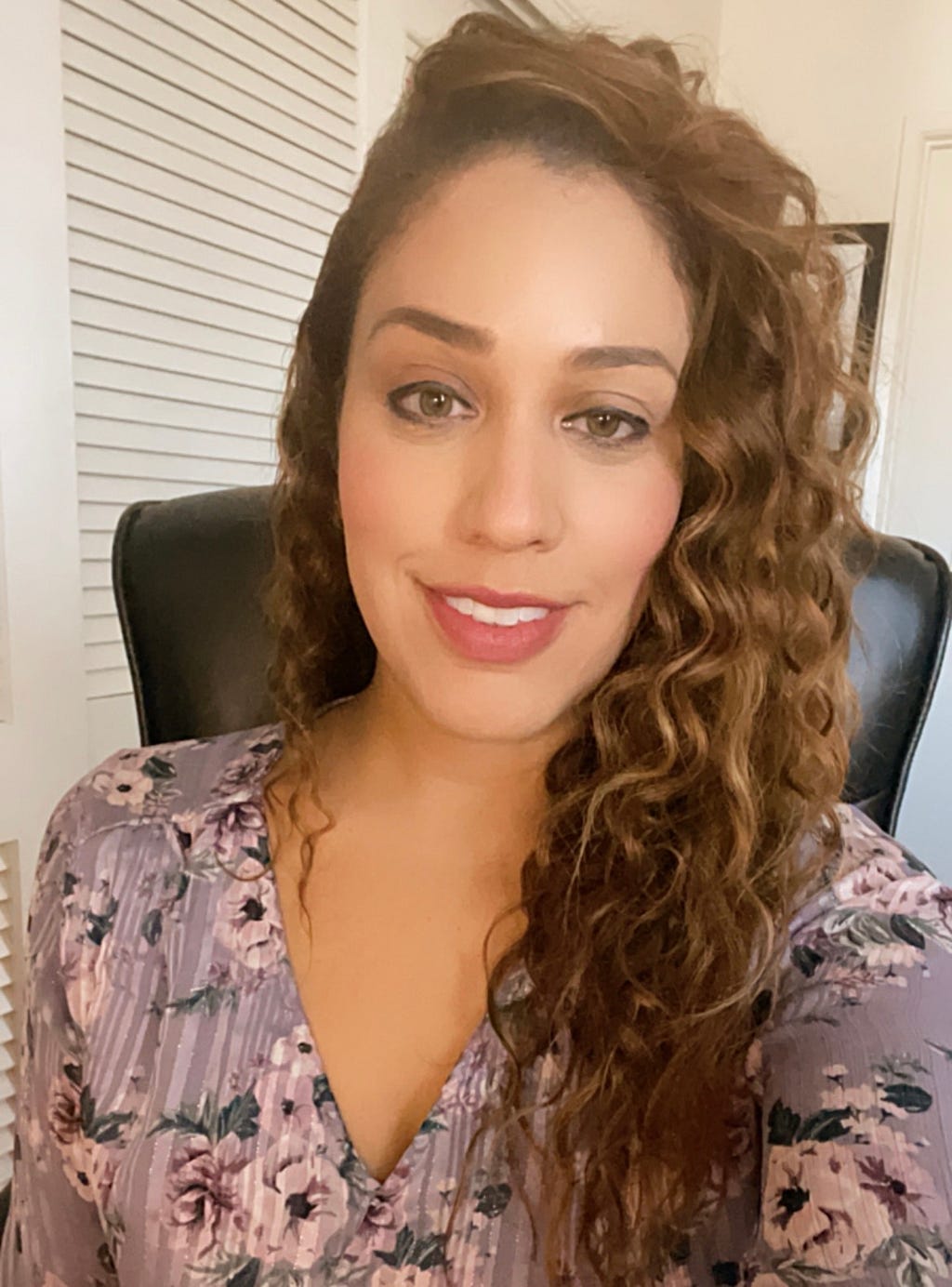
I’ve been in the trenches of occupational health and safety work with Jessica Martinez for the past decade pushing for increased worker power and better working conditions. Worksafe is proud to endorse Jessica along with many of our allies and partners for the position of Cal OSHA Chief. Governor Newsom is currently considering candidates for this position so if you haven’t already joined others such as UFCW, SEIU, Western State Council, CA Teamsters Public Affairs Council, UNITE HERE, CA Federation of Teachers, CA Conference of Machinists, CA Legislative Latino Caucus, Los Angeles County Federation of Labor, and the California Labor Fed, feel free to reach out to the Governor’s Appointments Office to let them know. Many of us showed our support in a collaborative endorsement letter that was sent to the Governor in November.
Jessica is the co-executive director for the National Council for Occupational Safety and Health (National COSH) where she has led an exceptional and dedicated team for over nine years at the national level. In her position, she spearheaded a national network with over 26 local organizations and led program development, organizing efforts, public policy and education initiatives. She has earned and gained the trust of worker advocates and leaders across the country. This has led to National COSH’s ability to build and strengthen coalitions throughout the nation that engage workers as leaders in achieving critical workplace health and safety improvements.
Jessica’s experiences in worker health and safety have been extensive and enriched by her personal and professional encounters. She is the proud daughter of immigrant parents who held various jobs in the service sector to sustain their family. She has over two decades supporting and advocating for the safety and health of workers in California and across the country. At the core of her work is her passion, leadership, and dedication to workers’ rights, which she and many of her supporters believe make her the ideal candidate to serve as the Chief of Cal/OSHA. She is committed to protecting workers and continuously improving workplace safety and health, especially those most vulnerable to poor working conditions — low-wage workers of color, immigrants, women, and youth.
But let’s hear from Jessica. We caught up with Jessica to learn more about what she’s all about.
Question: You’ve actually been an advocate for workers rights for a long time. How did you start out?
Jessica: Being the daughter of a union leader and human rights activist father, I learned at a very young age the value of safe and quality jobs. However, I immersed myself as a worker rights advocate while studying at UCLA and simultaneously supporting food service workers on campus to gain access to safe jobs and fair pay. It was important to me to find the intersection between being a student at a prestigious academic institution and ensuring that its prestige was also rooted in providing quality jobs for all its workers.
Question: What is your leadership style and what has that experience looked like?
Jessica: I provide strategic, collaborative, and innovative leadership. As a tactical leader, I have led facilitation and development of strategic planning that have led to successful implementation of work plans and organizational goals. In addition, implemented capacity building programs for organizations and professional development opportunities for staff and board leaders.
Establishing key partnerships and collaborations has proven critical to achieving transformational change. I establish partnerships among diverse stakeholders — workers, public health and health and safety technical professionals, directors and staff of different organizations across the country, legal reps and lawyers, labor reps, and government representatives.
Lastly, I have led several work groups and committees in local and national efforts to recommend and oversee the implementation of OSH policy — including the development of the National Agenda for Worker Health and Safety, served on National Advisory Committee for Occupational Safety and Health (NACOSH) under the Obama Administration, Temp Worker Health and Safety Convene, among many others. Finally, I have extensive experience serving as the public spokesperson of national efforts promoting worker safety and health. In this capacity have managed public interviews among the media and press and have served as speaker at special events.
Question: What has been the fuel or fire for your work? Why are you so passionate about workers’ health and safety?
Jessica: Throughout my years working in the field of occupational safety and health, I have learned of tragic stories of workers dying on the job and workers suffering severe injury and/or illness, all which could have been prevented. I believe that every worker should return home safe and sound to their loved ones after their work shift… this should not only be a worker’s right but an essential human right! A healthy worker has a domino effect on their family and community, which in turn creates a healthy society. I am passionate about creating a fair, equal, and healthy society!
Question: What work have you done with industry or employers to ensure a healthy and safe workplace?
Jessica: I am experienced in the development and implementation of robust health and safety education programs for small businesses. While working for the UCLA Labor Occupational Safety and Health Program, I supported diverse small business owners throughout CA and the country to incorporate multilingual safety plans and training for workers. One of my specialities is convening multiple stakeholders to execute shared goals and objectives to maintain high standards for safe workplaces.
I am in tune with the needs and challenges of small businesses during the ongoing pandemic. My leadership and vision communicate clearly the benefits of small businesses having a preventative plan to minimize workplace hazards and implement safety procedures that build healthy and productive businesses that support the owners and the workforce.
And there you have it. Now, more than ever, with the pandemic still raging in workplaces across California, we need a Chief who understands the plight of workers. Once again, feel free to reach out to the Governor’s Appointment office at (916) 445–4541 to put a good word in.
In Solidarity.
By AnaStacia Nicol Wright
 Photo by Sincerely Media on Unsplash
Photo by Sincerely Media on UnsplashWorksafe is located in the heart of downtown Oakland. We’ve been here for four decades; we consider ourselves locals. As locals we very much miss the pre-pandemic fanfare of First Fridays in Oakland. So much so that we had to bring it back, revamped!
Back in October of 2021 Worksafe’s management team approved a new work schedule. Per this new schedule, Worksafe will be closed on the first Friday of each month, which started on November 5, 2021. Known internally as “First Fridays!” (well, that’s what I keep tryna make catch on :-)).
Oh and did we mention the mandatory day off is PAID!!
We took this step to be even more in line with our policies to support the health and well-being of California workers — and that includes us! We can’t effectively help the community achieve healthy and safe workplaces without doing the work internally first. And while we’re all still adjusting to the shift, the feedback has been positive (because, afterall, what worker reacts negatively to a paid day off?!).
One of the small hiccups we’re working through is schedule management. Although Worksafe is off on the first Friday of every month, the rest of you aren’t. Therefore, we tend to come back to a hoard of emails, requests, etc.
How to arrange our schedules so that we can take these Fridays’ off without coming back on Monday and feeling overwhelmed is the process we’re working on; but, we’re committed to it.
Another small issue is how to handle meetings, hearings, conferences, training, etc. that other organizations need us to attend on those days. There are a few things to iron out like making sure taking the day off doesn’t actually cause a pile-up of work when we all come back…but, again, we’re working on it.
As radical as all this may sound, it isn’t. The 40 hour work week, as we now know it, was created in 1938 when Roosevelt signed the Fair Labor and Standards Act. Now, there’s plenty of good stuff in there, however, IT’S OOOOLD.
In writing this, we hope to encourage other employers out there to consider renegotiating this “social contract”. It may seem crazy, but imagine the uproar when Illinois was the first state in the U.S.A to mandate an 8 hour work-day. Or, how flabbergasted folks probably were when FDR said any time worked over 40 hours requires overtime pay.
It’s been almost 100 years. It’s time for a change. Family life is different. The way we understand the importance of mental health and personal care is different. Work-Life balance is only an idea, if employers don’t actually take the time to create policies conducive to truly balancing their employees’ life needs with their company’s work needs.
UJIMA — Collective Work with the Bay Area’s Black African Immigrant Population
By AnaStacia Nicol Wright
December 26th, 2021 kicked off my Kwanzaa celebrations this year. COVID and the Bar exam have hampered my usual celebrations. But, I was actually able to find fulfillment in my work of one of Kwanzaa’s main principles. Day 3 of Kwanzaa’s Nguzu Saba (7 Principles) is Ujima or Collective Work.

On Tuesday of this week I found myself eyeballs deep in this principle as I reviewed translations videos Worksafe contracted for through our CWOP grant. Our goal under this grant is to ensure vulnerable Bay Area communities have COVID-19 information, protective gear and vaccine access. As part of this goal, I found myself looking for ways to reach the African/Black immigrant community with our outreach efforts. However, we didn’t have any strong connections to the African immigrant community.
Eventually, with the help of Aron Berhane with Black Alliance for Immigrant Justice, I was able to identify some of the main languages spoken in the Bay Area by this community: French, Igbo, Tigrinya and Swahilli. From there Aron and I worked together to find community members to create video and document translations of our California Workers Outreach Project (CWOP) materials.
The objective was to make the workers’ rights information accessible not only to readers of these languages, but also those who speak it, but struggle with their reading. Worksafe was able to apply funding provided by the Sierra Health Foundation in our CWOP to pay folks not just to translate written documents, but create video content as well.
This is what I spend my Tuesday or Ujima doing. The “Black” community speaks thousands of different languages and hail from hundreds of different places. We share a lot, yes. But there is also much that separates us. Bridging this gap is paramount in building collective strength to make sure all of our voices are heard and our needs met. Not just in the workplace but everywhere.
So, Joyous Kwanzaa to me despite COVID-19, the bar exam and awful weather. Many thanks to Aron Berhane, Mary Mbugua, Sylvain Breka and Ifunanya Nwanonyiri for collaborating with us on this project. Special thanks to to Shared Value Media for their support, especially Ariel Marsh, Carly Lynch and Tibein Tedemet. And of course, thank you to the Labor and Workforce Development Agency and the Center at the Sierra Health Foundation for their support.
Worksafe just submitted our latest comments on the state of California's COVID-19 Emergency Temporary Standard (ETS). This round relates to Cal/OSHA's proposed "Second Re-adoption" of the ETS, which as an emergency rule is subject to specific emergency processes.
by Stephen Knight
Worksafe just submitted our latest comments on the state of California’s COVID-19 Emergency Temporary Standard (ETS). This round relates to Cal/OSHA’s proposed “Second Re-adoption” of the ETS, which as an emergency rule is subject to specific emergency processes.
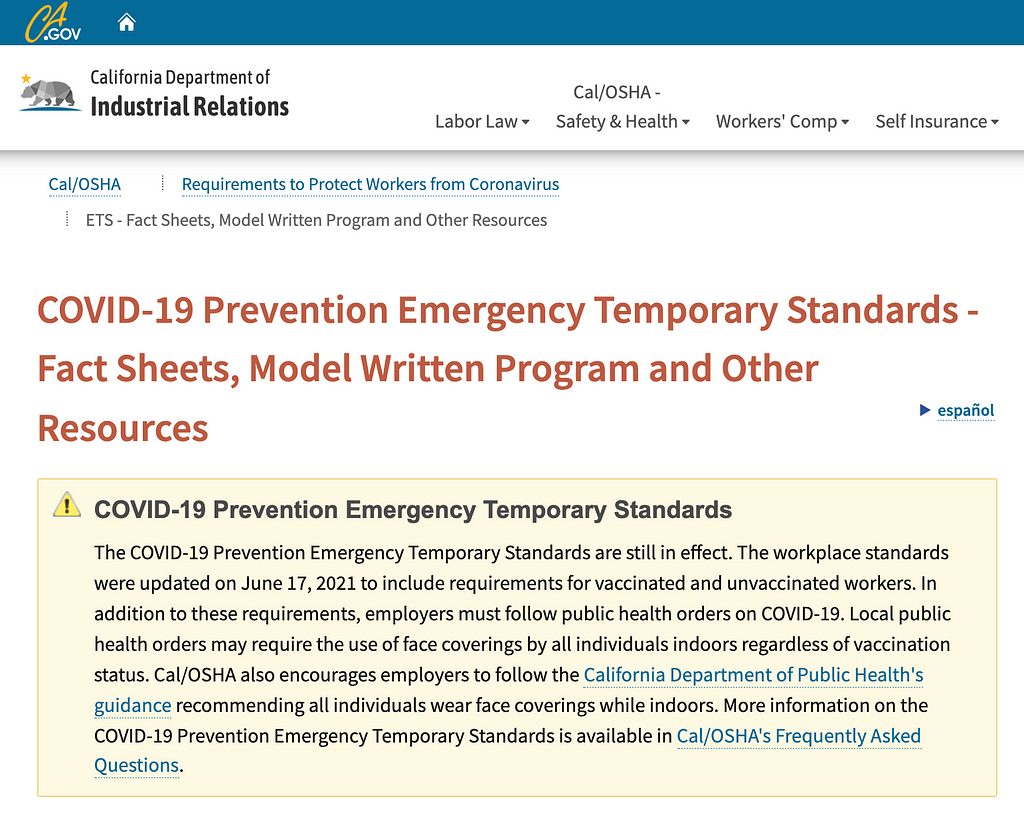 Cal/OSHA’s ETS web page
Cal/OSHA’s ETS web pageThe first re-adoption was in June 2021. Unfortunately that timing overlapped with a low point of COVID concern among too many people in California, as well as with the Governor’s long-announced June 15 deadline for “reopening” the state. A number of appropriate and science-based recommendations from Cal/OSHA, such as requiring masks in indoor work environments without regard to vaccination status, were greeted with outrage by the business community and voted down by the OSH Standards Board. This decision was very widely and quickly seen as a mistake as the COVID Delta variant came on strongly in late summer, but it has not been undone. The vote was taken at a 10+ hour public meeting that was also attended by thousands of anti-public health protestors angrily asserting false and disturbing things, such as that face coverings are a health hazard.
Most Californians, at least, recognize the need for and efficacy of protective standards in the workplace. The proposal from Cal/OSHA we are now commenting on includes science-based recommendations that are in sync with the California Department of Public Health. Among other things, our limited comments ask the Standards Board to consider a broader definition of what constitutes a “case” in the workplace.
The ETS cannot be amended more than twice, and this version will be the last, expiring in April 2022.
Work is underway on a draft set of post-emergency COVID-related standards for the Standards Board to consider early next year, which would then be in place into 2024. It has less detailed requirements and the removal of some key protections. That includes no exclusion pay for workers, despite the continuing requirement on employers to exclude those who are symptomatic or positive for COVID. Most workers have little to no sick time and cannot afford to lose their income. Reporting of symptoms and of close contacts will be severely reduced when workers understand they or their coworkers will be put out of work unpaid for 10 days as a result.
Worksafe has a petition demanding that exclusion pay remain in the rules. Please sign the petition, and stay tuned.
This Workers Memorial Day, 2021, Worksafe would like to amplify the dedicated work of eight extraordinary organizations that have been rising through challenges to ensure that the communities that they served are supported and uplifted through the pandemic.
By Jora Trang
This Workers Memorial Day, 2021, Worksafe would like to amplify the dedicated work of eight extraordinary organizations that have been rising through challenges to ensure that the communities that they served are supported and uplifted through the pandemic.
From providing food and personal protective equipment to vulnerable populations to fighting for the passage of protective laws, these organizations have been pounding the pavement, their passion clear as they roll up their sleeves to lean into the work of ensuring that their communities continue to thrive. We are extremely proud of these allies and partners. Visit them on their platforms to learn more about their work and to support them.
Here they are in alphabetical order:
Bay Rising builds the power of communities of color to create a just world for everyone. Through their civic engagement network of over thirty grassroots organizations in the Bay Area, they are building a world where all people have community control and political power, and where everyone has a home and can live without fear of deportation or criminalization. They are creating a world where everyone can earn a living wage, receive quality healthcare and education, and live in neighborhoods with clean air, public parks, and water. They believe in environmental justice and just transition to a regenerative, life-giving economy.
Bay Rising knows that communities get through crises like COVID-19 when they pull together with community power and political power. Towards this end, Bay Rising created a searchable Covid Resource Guide to make it easy to find and get help as we protect, recover, and heal our communities. This amazing guide is available in English, Spanish, and Chinese, spanning across the whole Bay Area, with 11 categories including the recently added vaccine resource category.



Conceived in 2014, the Black Cultural Zone addresses the disparate impact that decades of disinvestment in East Oakland and more recent displacement of Black People and Black Businesses from their legacy communities here in Oakland by centering Black Arts and Culture within a community development framework.
https://medium.com/media/8ad9a4da8f588d2123d29c07963d9415/hrefThe East Oakland Black Cultural Zone Collaborative was formed by the Eastside Arts Alliance and several non-profit organizations located in East Oakland to develop the East Oakland Black Cultural Zone. The Collaborative designated the East Oakland Black Cultural Zone as the 50 square blocks from High Street to the San Leandro Border and focused on implementing arts and cultural strategies and engaging artists and community members in art activism.
To address the disparity caused by the pandemic, the Black Cultural Zone launched a Neighborhood Messenger Program that connects residents on over 100 Blocks throughout Oakland. Messengers are trusted voices on their block that are supplied with information and resources on topics ranging from COVID 19 Workers Rights and Emergency Housing to Personal Protective Equipment and Non-Perishable foods. Outreach at the community level with neighbors helping neighbors is an effective method to address chronic and acute social, health and quality of life challenges faced in the most vulnerable neighborhoods. Messengers receive a $500 monthly stipend for building healthy relationships in their community.
California Domestic Workers Coalition
The California Domestic Workers Coalition (CDWC), founded in 2006, has been a steady force in fighting for stronger protections and recognition for the more than 300,000 domestic workers in California.. In California, more than 2 million private households rely on the labor and services of domestic workers, such as house-cleaners, nannies, and in-home attendants to seniors and people with disabilities. This workforce is made up primarily of immigrant women of color, and many are the primary breadwinners for their families.
CDWC is a domestic worker led, statewide alliance of community-based organizations, domestic employers, worker centers, labor unions, faith groups, students, and policy advocates. Together, they advance a movement for the rights and dignity of immigrant women workers by building power through legislative advocacy, grassroots organizing, and leadership development. They are working hard to confront a history of exclusion to basic labor protections and to advance the rights and dignity of domestic workers and their communities across the state.
For the past year, and now moving into 2021, CDWC is advancing a protective bill, The Health and Safety for All Workers Act, that removes the historical exclusion of domestic workers, so that domestic workers can have the legal right to health and safety training and protective equipment, and be protected against retaliation when they try to protect their own health and safety at work.
The COVID-19 pandemic and recent devastating wildfires in California has exacerbated the dangers that domestic workers and day laborers face on a daily basis because they are excluded from CAL/OSHA protections and regulations.
Right now domestic workers are right at the frontline of the COVID-19 pandemic. They work with people most vulnerable to the illness, like the elderly and people with compromised immune systems, often without adequate protective equipment or training. And they themselves don’t have a safety net to lean on in times of crisis, like affordable health care, unemployment benefits, and paid sick days.
During the wildfires that devastated California, we saw a similar phenomenon. Domestic workers and other household workers, like day laborers, were asked to stay behind to fight fires, guard homes or pets, work in smoky conditions, and clean up toxic ash, all without protective equipment. Workers were further put at risk when employers failed to warn them that the homes they work in were under mandatory evacuation.
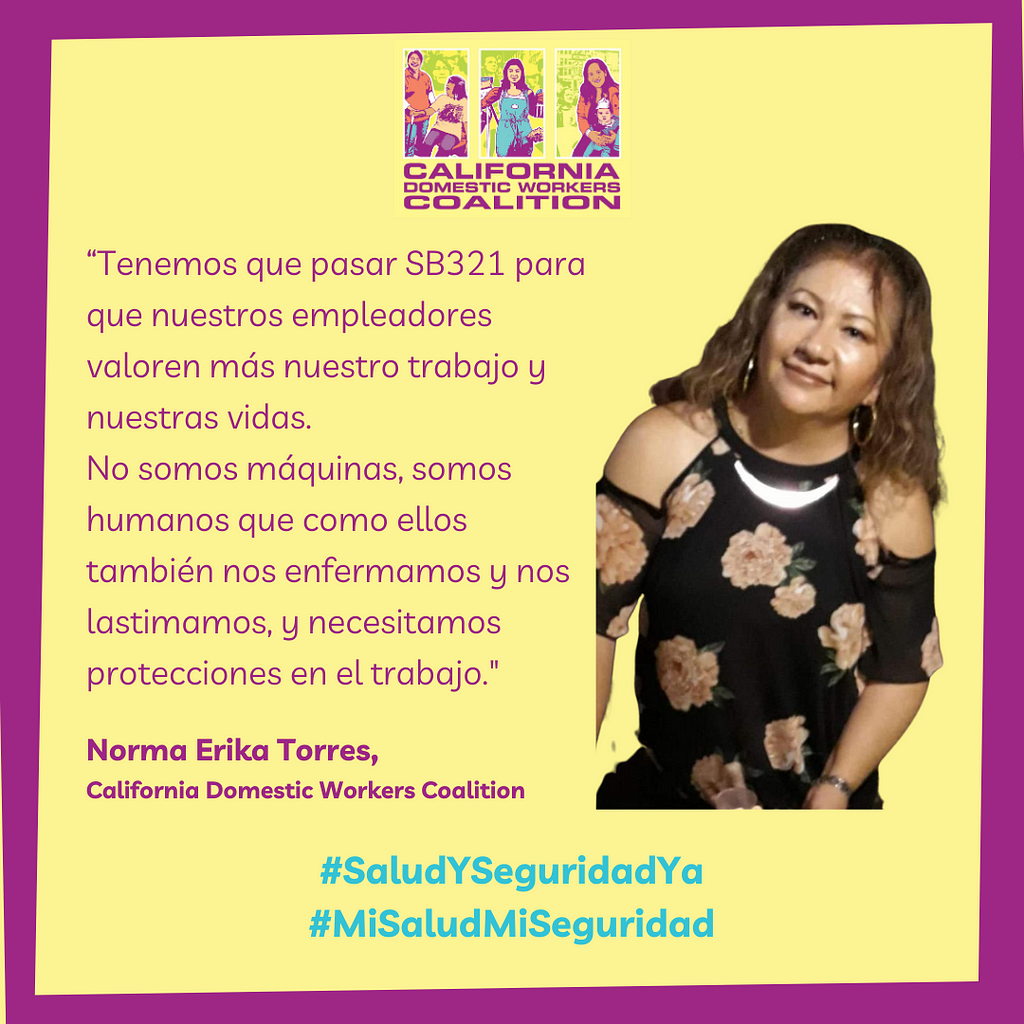
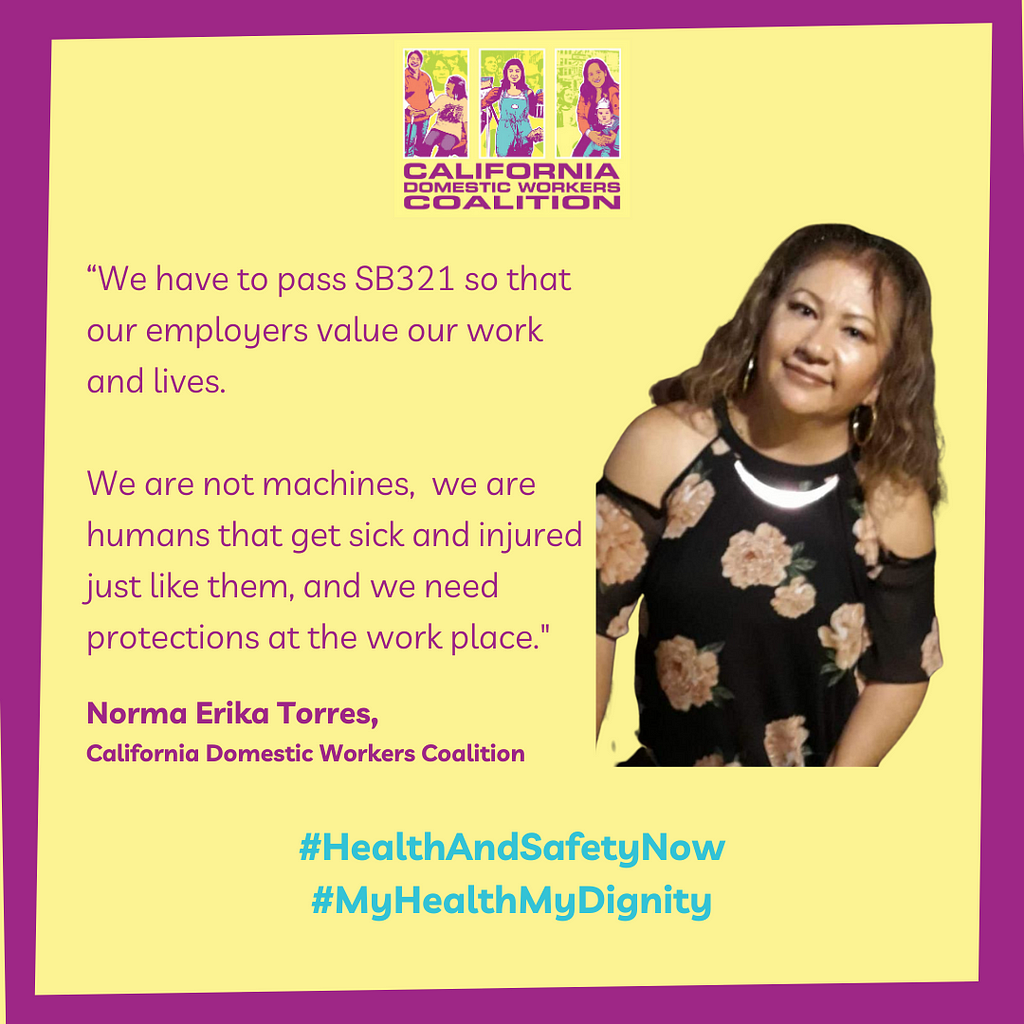
Domestic workers often have to make the impossible choice between working in unsafe conditions or going without any income, especially during these kinds of crises. But domestic workers face risks every day- the risk of injury, exposure to infectious disease and household cleaning chemicals, and the very real threat of physical, emotional, and sexual abuse by employers or clients, because of their often isolated and informal work environment. SB 321 goes a long way to protect domestic workers.
California Healthy Nail Salon Collaborative
Founded in 2005, the California Healthy Nail Salon Collaborative is a statewide grassroots organization that addresses health, environmental, reproductive justice, and other social issues faced by its low-income, female, Vietnamese immigrant and refugee workforce.
Using a multi-tiered approach that blends community organizing, grassroots policy advocacy, and community-based research, the Collaborative builds power of the nail salon community to develop solutions that benefit the nail salon workforce, their families, small immigrant and refugee owned businesses, and their communities.
Throughout the pandemic, the Collaborative has been extremely active in engaging the nail salon industry and workers to ensure their safety and health and to support them in reopening safely. They have provided information in English and Vietnamese to salon workers and they have spent countless hours directly meeting with, training, and encouraging salon workers as they struggle to understand technological and language barriers, the various phases of the pandemic.
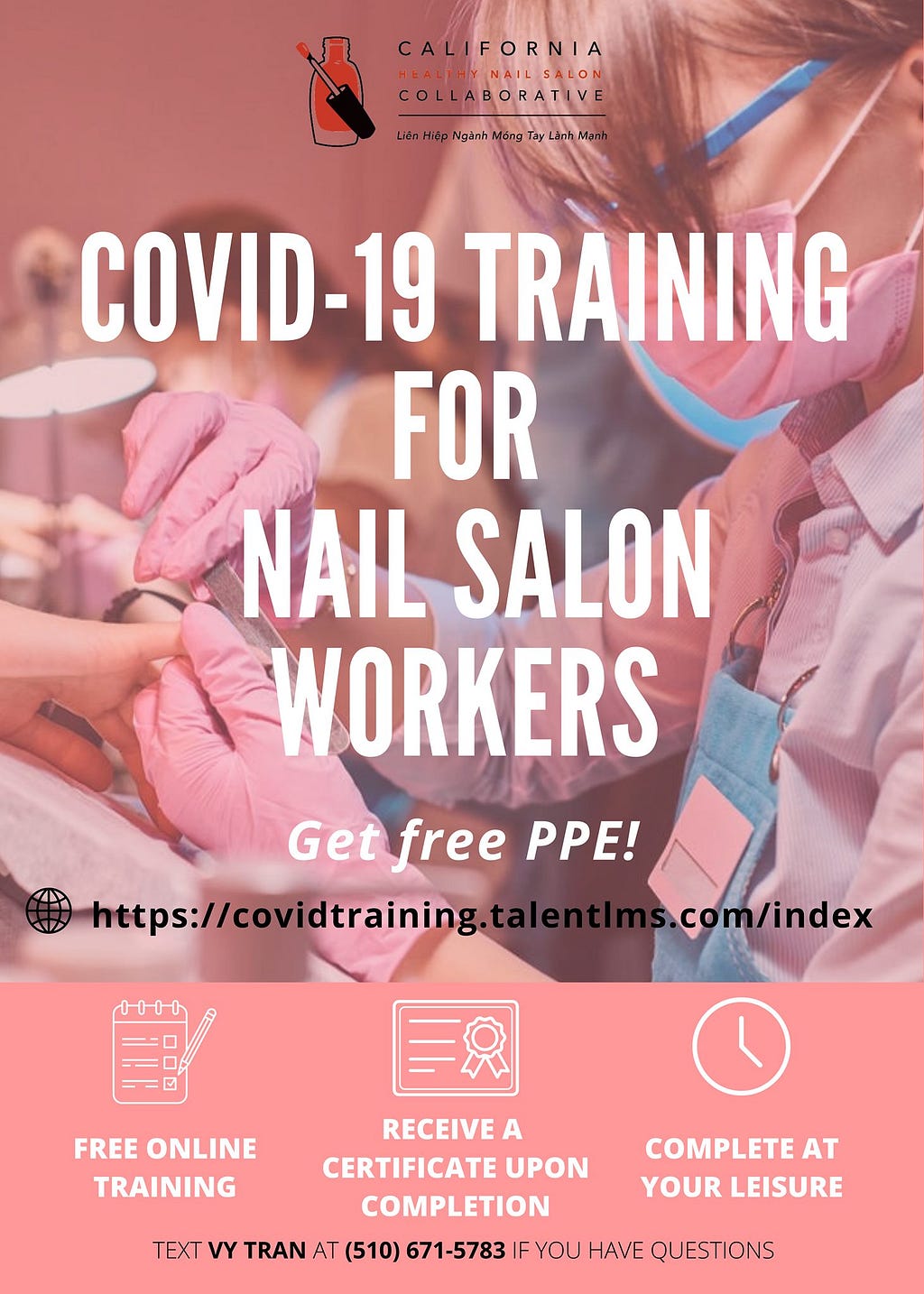
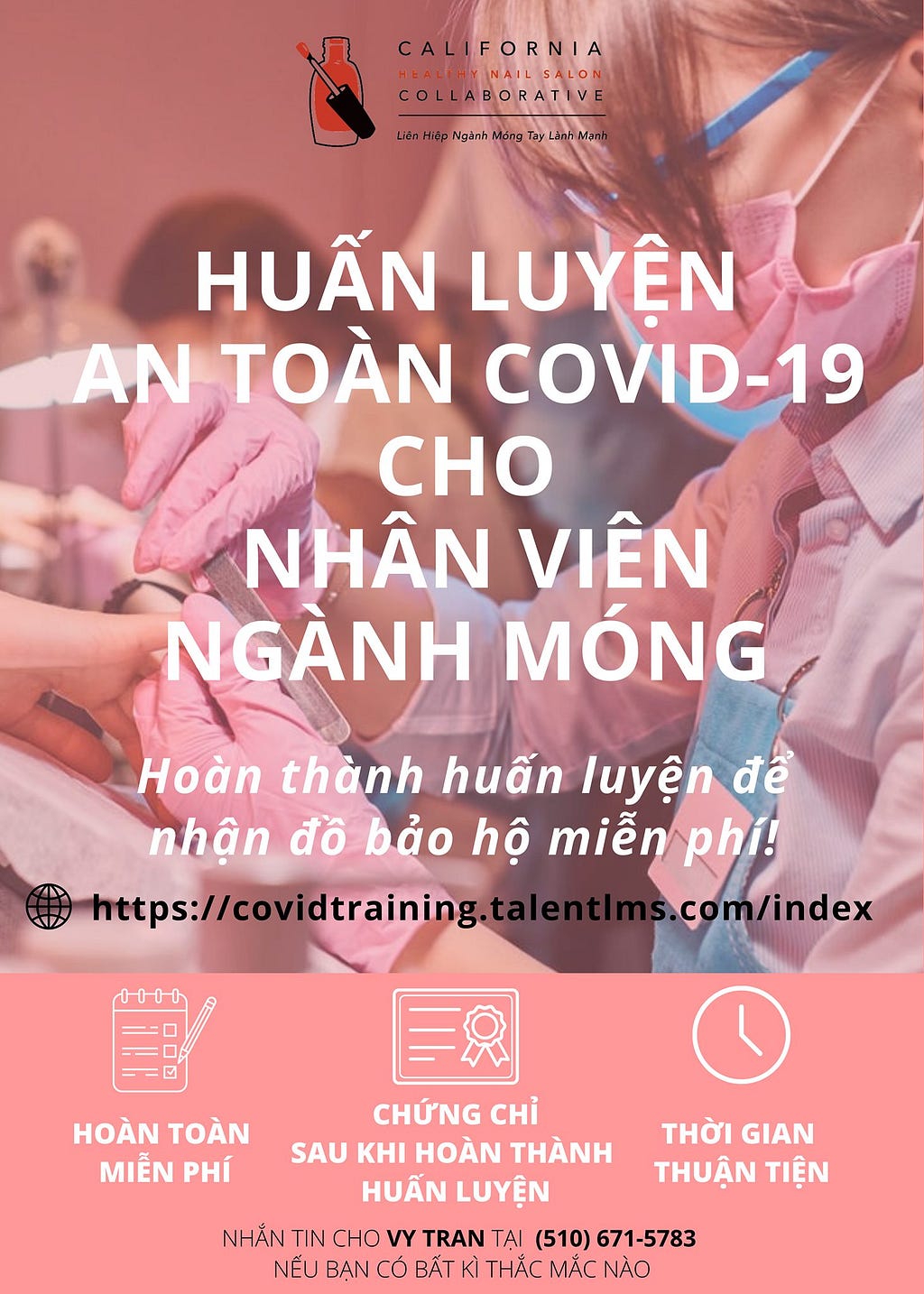
Their social media presence has increased exponentially as they have held facebook live engagements and trainings and posted information to the community on COVID-19 such as Myths and Facts, the vaccinations’ effect on various populations such as pregnant women, and double masking to increase protections.
Their live streams have included discussions with Dr. Mychi of Asian Health Services and Dr. Angela Quang about the various vaccines available.
https://medium.com/media/78ecadff8bddfc02b216bfd066c14659/hrefPAWIS was formed in 2002 to fight against social and economic injustice faced by Filipino workers and Im/migrants in Santa Clara County. PAWIS supports Filipinos in Santa Clara County, the bay area, in the U.S and around the world on workplace rights issues. They are Filipino workers and im/migrants who have come together because they realized the need to support and strengthen their community against abuse and exploitation. They provide support to Filipino workers in industries such as health care, retail/sales, and electronic manufacturing.
During the pandemic, they have uplifted issues facing Filipino caregivers and frontline workers including hosting the online webinar, “Conversations on the Issues and Concerns of Caregivers.” The webinar provided critical information about the struggles faced by caregivers in the United States and detailing the lack of protective regulations in the caregiving industry. Stories about the pandemic’s effects on the dangerous working conditions of caregivers were shared and participants discussed how feudal culture from the Philippines contributes to the present day exploitation of caregivers.
They have also been amplifying and urging solidarity to address the rise in anti-Asian sentiment that has affected their members. In their issued statement, they said, “Most of our members are essential workers who continue going to work despite and inspite, of COVID 19…However, the anti-Asian sentiment that has long plagued this nation and has escalated to violence and attacks against Asians in these past weeks sowed added fears and worries to our community that has been through so much already in the past year. Filipinos and our Asian brothers and sisters are subjected to horrific physical attacks, racial slurs and other forms of harassment…We urge our community to stand strong and in solidarity with our Asian sisters and brothers. We denounce the type of scapegoating that we Asians and Asian Americans have been subjected to in the wake of the pandemic. We deserve to live, breathe and work in this country. We must continue to advocate and fight for our rights and welfare because every person in this world deserves to live their lives with safety, dignity and respect.”
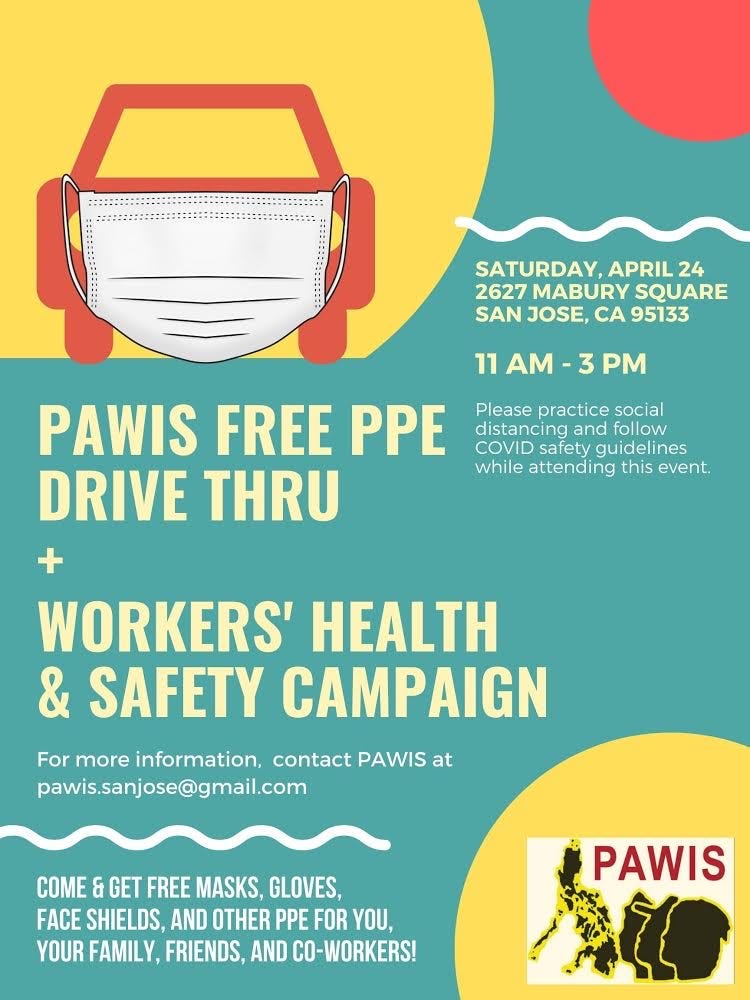
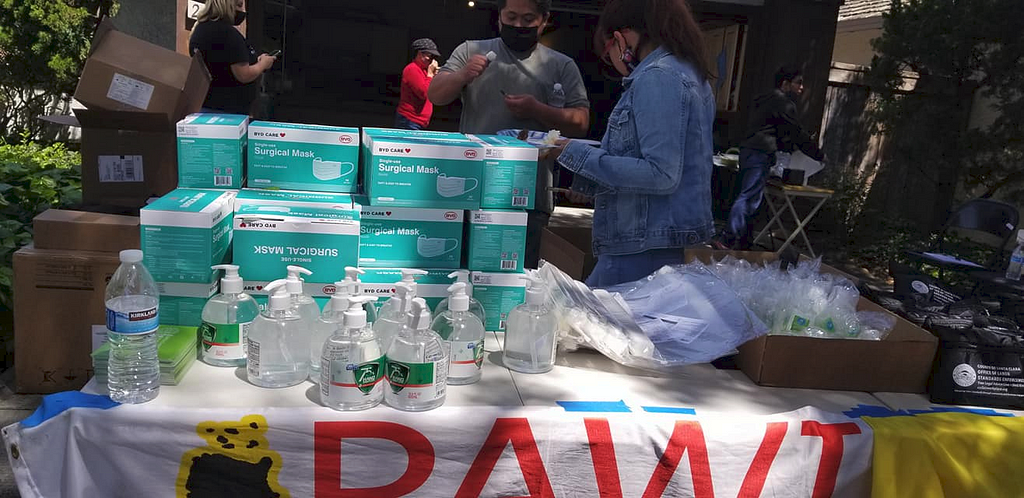
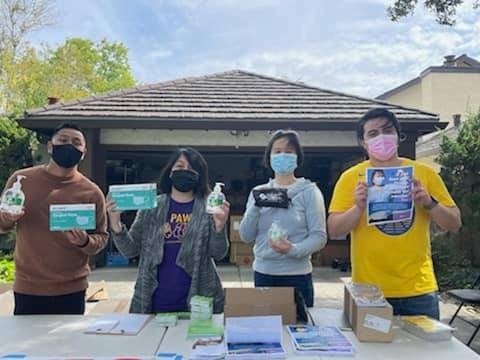

More recently, they have joined Step Forward in providing critical PPE and workers rights information to workers in Santa Clara County.
https://medium.com/media/a2cd4d80422badd89ae76a4f8425e31f/hrefStreet Level Health Project (SLHP) is an Oakland-based community center dedicated to improving the wellbeing of underinsured, uninsured, and recently arrived immigrants in Alameda County. SLHP promotes self-sufficiency for marginalized people of color by creating equitable and dignified access to health and employment regardless of socioeconomic or immigration status. SLHP engages the community in constructing collective power and leadership in order to advance a more just, inclusive, and empathetic society. They provide safety net services for immigrant communities to ensure equitable health access for the uninsured. They tackle institutional and systemic barriers to create an inclusive society that honors the historical contributions of immigrant communities.They address income security to empower low-income contingent workers and reduce health disparities associated with unemployment and underemployment.
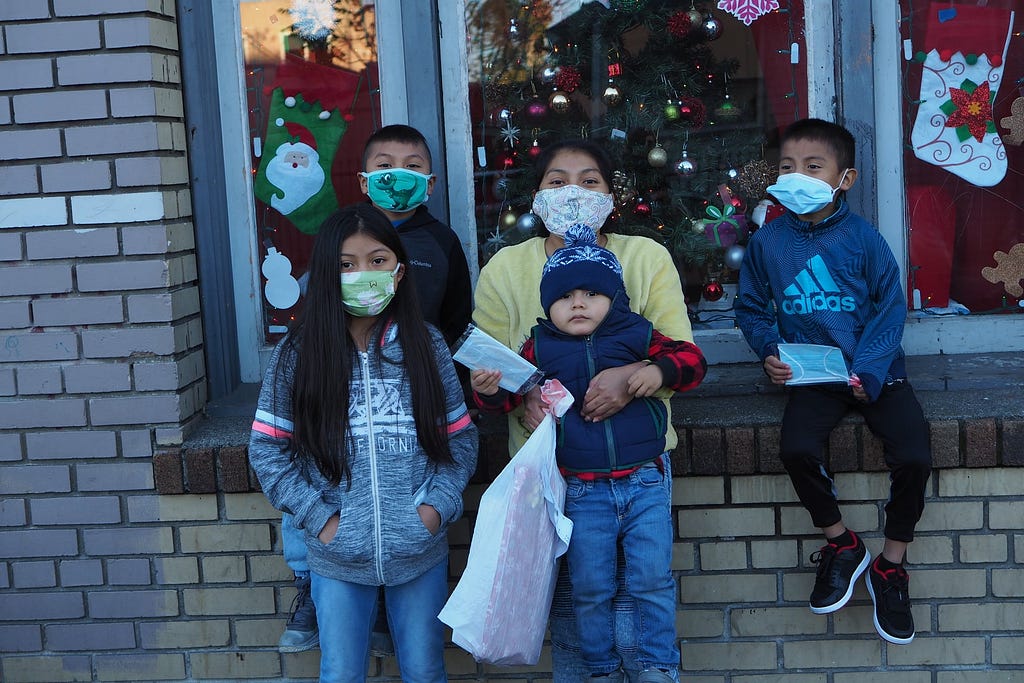
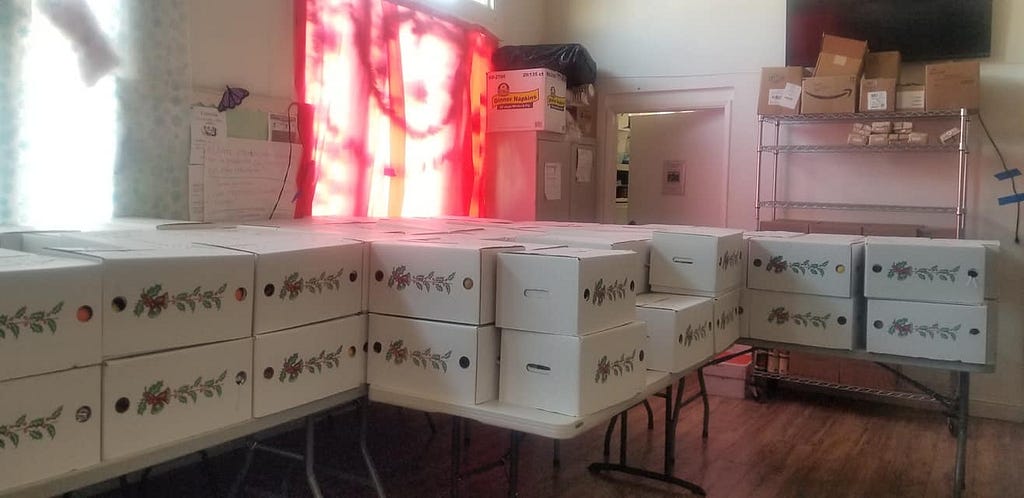
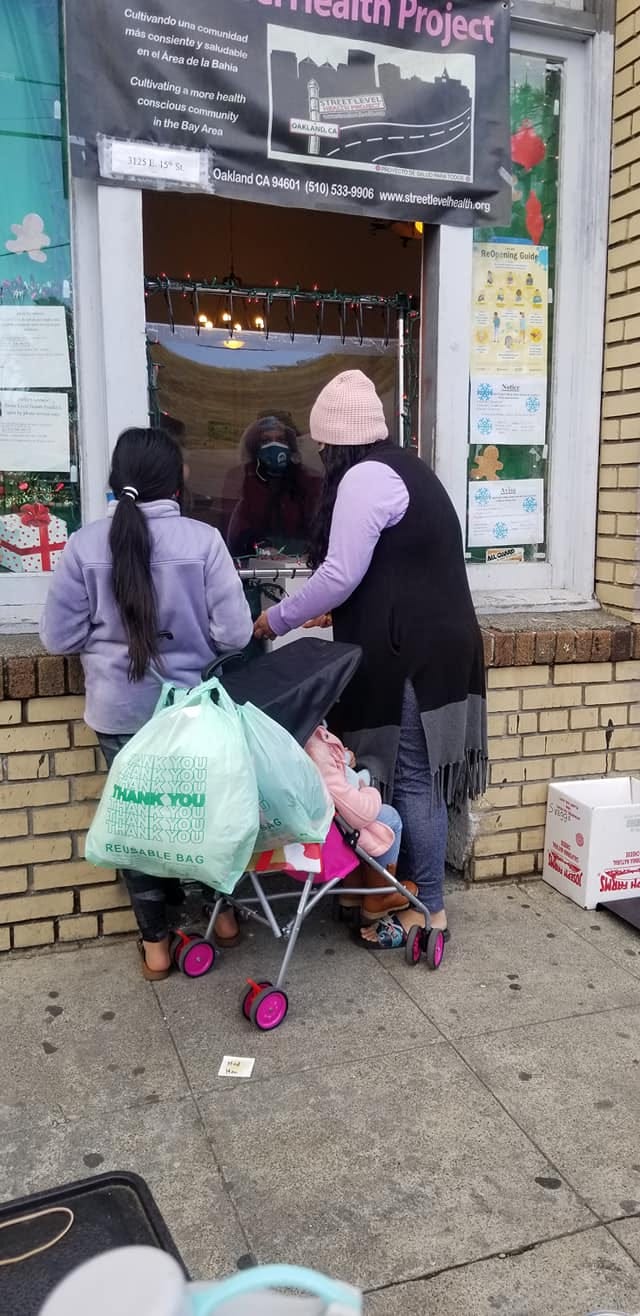
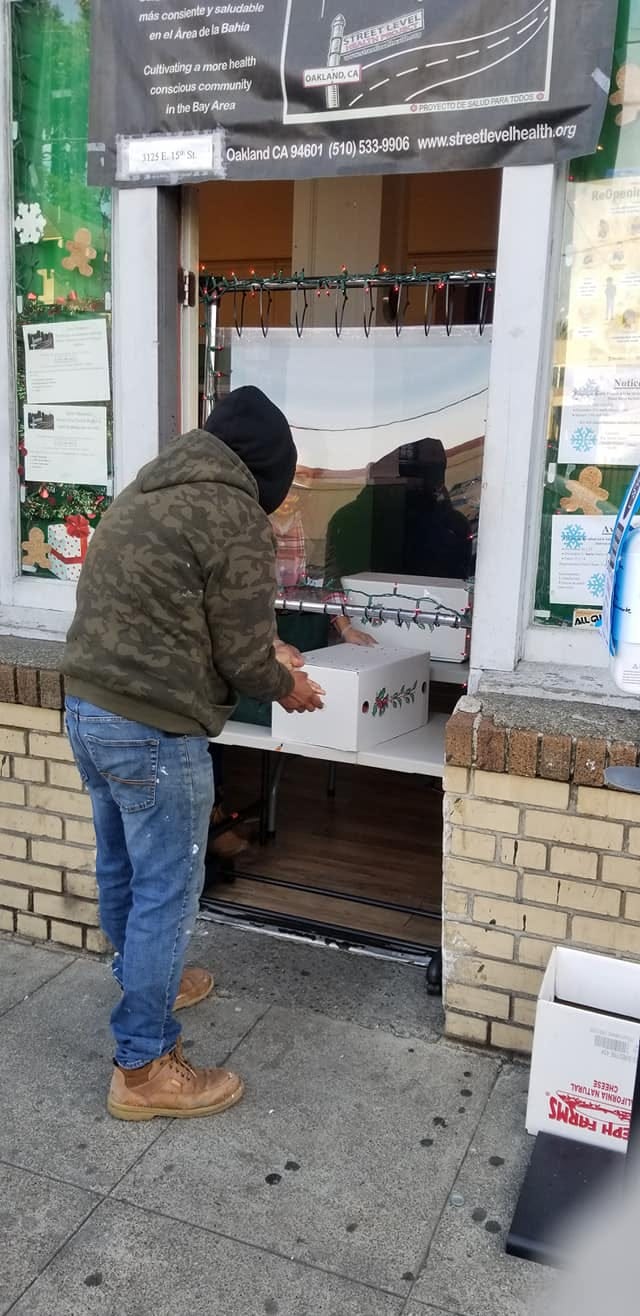

During the pandemic, SLHP has been instrumental in engaging hard to reach populations. Every week SLHP has been committed to hit the streets whether it was at day laborer stops, during their food distribution, or literally just walking the streets of Fruitvale and East Oakland to reach the Latino and Maya Mam community. Their COVID outreach team provides resources, food, PPE, and critical COVID and vaccination updates. They have provided 1:1 assistance to day laborers and their families at the different vaccine sites in the Fruitvale area to address linguistic, literacy, and technological barriers. SLHP is very proud of their team for all their hard work in making sure the communities they serve have what they need to make informed decisions.
https://medium.com/media/763515145a96db575ff72a9c0cea3a2f/hrefTemp Worker Justice is a nonprofit that supports temporary workers and workers’ organizations seeking justice and fairness in the workplace. They are led by temp workers, advocates, organizers, researchers, and labor educators. Temp Worker Justice is led by Dave DeSario, one of the Founding Members, who has been a temporary worker many times over. His experiences led him to become an advocate for others. While working as a temp in 2009 he created the leading website for information on temp staffing issues, connecting with hundreds of temps across the country to provide resources and referrals. The goal of Temp Worker Justice (TWJ) is to reverse the trend of temping-out America’s workplaces, to help empower temp workers and their organizations so they may obtain the full pay and benefits, safe working conditions, and complete respect that “temp” workers deserve and are entitled to.
Temp and contingency workers found their jobs most at risk during the pandemic with many being the first to lose jobs. With the critical work advocacy of Mike Foley, lead researcher at Washington State’s Safety and Health Assessment and Research for Prevention (SHARP) Program, Temp Worker Justice has made Washington State the third state in the nation to pass protective laws for temporary workers with far reaching implications.
https://medium.com/media/4d853e41447f0a2b26ac622f25693a7f/hrefThe new law, SHB 1206, which takes effect July 25, 2021, was enacted after a request by Washington State’s Department of Labor and Industries and provides an important barrier to temporary worker schemes which provide cost cutting incentives for companies to use temporary agencies.
Laws such as this go a long way to ensuring a baseline of protections for workers when they are faced with emergency situations such as the COVID-19 pandemic. Read more about this bill at Counterpunch and in our article: “Washington State Has a New Temp Worker Law — How Do California Laws Compare?”
Trabajadores Unidas Workers United
Trabajadores Unidos Workers United (TUWU) was formed in 2002 as Young Workers United, and is a multi-racial and bilingual membership organization dedicated to improving the quality of jobs for workers in San Francisco. They raise standards in the low-wage service sectors in San Francisco through worker organizing, know your rights outreach, leadership development, and base-building.
They believe in the power of organizing whole people at the intersection of their identities, political leanings, and geographies. With their members leading, they are building a world where low-wage service workers have dignity and respect at their jobs and where they shape the political priorities that most deeply impact Latine working class communities.
TUWU engaged in a vital Essential Workers Survey over the summer of 2020 where they surveyed 295 immigrant workers who work or live in San Francisco to assess current conditions and working experiences for the working class Latinx community in San Francisco during the COVID-19 pandemic and through the reopening of businesses. The majority of whom were restaurant and domestic workers.

The report concludes: “low-wage workers were being overworked and treated as if they were disposable. A restaurant worker stated, ‘My family and I tested positive for COVID-19 in early August. We have been quarantining because the entire family tested positive. I had a job lined up and had started working for two days, but then I lost the job after being in quarantine for two weeks.’ Workers deserve to be treated with respect and dignity and the needs of employees should be priori-tized over the needs of businesses. Employers should not take advantage of their employees, especially as we are amid a pandemic and low-wage workers are in a vulnerable position. It is not enough to pass labor laws to ensure workers’ rights are protected. These laws also need to be enforced to put an end to the exploitation of low-wage immigrant workers.”
Washington State Has a New Temp Worker Law — How Do California Laws Compare?
by Jora Trang, Chief of Staff & Equity

Washington state just became the third state in the nation to pass protective laws for temporary workers with their new Protecting Temporary Workers Law. This law seeks to place a barrier to temporary worker schemes which provide cost cutting incentives for companies to use temporary agencies. Studies have long shown that temp workers in higher-hazard industries are two times as likely to be injured as their directly hired counterparts.
These schemes are well known for the profits they reap for employers at the expense of workers. Two policy briefs by researchers from the University of California Riverside’s Labor Studies programand the School of Public Policy’s Center for Sustainable Suburban Development found that warehousing jobs in the region are often filled through temporary staffing agencies that pay workers low wages while offering them no health insurance. At the time of the reports, workers in the Ontario region earned a dismal average of $10.05 per hour. To date, the minimum wage in Ontario is $14.00, trailing a dollar behind the state minimum wage.
How does California compare with Washington state’s new law? To answer this question, we need to look at the current state of laws about temporary workers in California first. California passed our own historic law on September 28, 2014, when then Gov. Jerry Brown signed AB 1897 into law. This law made California a leader in having some of the country’s farthest-reaching protections for temporary workers. That law came in the wake of growing awareness about the status of temp workers as the fastest growing and most vulnerable segment of the workforce.
It was also buttressed by ProPublica’s damning series which highlighted rampant wage theft and unsafe working conditions in worksites that employ temp workers. AB 1897 addressed a loophole in which complaining workers found their issues ping-ponged between the temp agency that hired them and the companies that contracted with the temp agencies. AB 1897 was designed to protect “perma-temps,” which include low-wage hotel housekeepers, factory workers, farm laborers, janitors, and warehouse workers who too often find themselves toiling for years at the same company but not benefiting from the status of full-time direct hire employees of the company that “out-sourced” their labor through the temp agency.
Most horrifying was ProPublica’s revelation of cases of untrained temp workers who have been seriously injured or killed in the workplace. In fact, in California, temp workers are 50% more likely to get injured on the job than their company-employed counterparts.
Labor Code section 2810.3 includes three main requirements:
- When a labor contractor provides temporary workers to a host employer, the latter must share all civil liability and legal responsibility with the former for the payment of wages as well as any failure to provide workers’ compensation coverage (required by Section 3700).
- A client company or employer cannot pass off any legal responsibilities or liabilities under the California/OSHA provisions to a labor contractor concerning the workers provided by the labour contractor.
- As and when a state enforcement agency demands relevant information to ensure compliance with applicable state laws, an employer or a labor contractor is bound to provide it to the concerned agency or department.
What this means in a nutshell is that when a temp worker gets injured on the job in California:
- Either of the two employers assumes the responsibility of covering the worker under workers’ compensation insurance. Who finally assumes the responsibility depends on the type of contract between them, but neither can deny responsibility or pass the buck to the other,
- Both employers have to take necessary steps to safeguard the worker from workplace injuries and illnesses, and
- Both employers need to have an injury and illness prevention plan that covers hazards encountered by the temp worker.
In comparison, the new Washington law has legislative language novel to California which definitively ends the ping pong game between temp agencies and worksite employers by making them both responsible for hazard analysis, training, documentation, and communication between temp agencies and worksite employers. The law, which focuses on the construction and manufacturing industries, prioritizes worker knowledge about the hazards of their job.
Provisions include the following language which requires that staffing agencies be proactive about worker health and safety. Specifically, “before the assignment of an employee to a worksite employer,” staffing agencies must:
- Inquire about the worksite employer’s safety and health practices and hazards at the actual workplace to assess the safety conditions, workers tasks, and the worksite employer’s safety program,
- Provide general awareness safety training to the employee for for recognized industry hazards the employee may encounter at the worksite,
- Provide, as a part of materials given to the employee, the department’s hotline number for reporting safety hazards and concerns, and
- Document and inform the staffing agency about anticipated job hazards likely encountered by the staffing agency employee.
Other provisions include providing tailored training about the particular hazards the employee will encounter and informing the staffing agency of any changes in job tasks, work locations, or new hazards.
The new law, SHB 1206, which takes effect July 25, 2021, was enacted after a request by Washington State’s Department of Labor and Industries (L&I). It is a stunning example of worker protective language and is an example of diligent and passionate work by Mike Foley, lead researcher at L&I’s Safety and Health Assessment and Research for Prevention (SHARP) Program and Dave DeSario and the team at Temp Worker Justice. Foley has been doing groundbreaking research on temp worker injuries for about 2 decades. The legislation was supported by NELP and the Washington State Labor Council, AFL-CIO.
It joins California’s Labor contracting: client liability, the Illinois Day and Temporary Labor Services Act, and the Massachusetts Temporary Workers Right to Know Law in the effort to protect temporary staffing agency workers. Come on California!
“Outside of Washington state, this law provides a blueprint for advancing temp worker safety. The provisions are based on detailed research and interviews with hundreds of temp injured workers, and directly addresses areas of greatest concern. It will prevent hundreds of injuries AND drive out low-road temp agencies undercutting safe jobs,” says Dave DeSario of Temp Worker Justice.
California! We gotta catch up!
Worksafe joins with those who are relieved that the American court system did not yet again deliver a travesty of justice. We hope that the verdict can provide Mr. Floyd’s family with some small measure of compensation for their enormous loss. We join the country in mourning and honoring Mr. Floyd’s life.
Washington state just became the third state in the nation to pass protective laws for temporary workers with their new Protecting Temporary Workers Law. This law seeks to place a barrier to temporary worker schemes which provide cost cutting incentives for companies to use temporary agencies.
More than a year into the pandemic, the sad fact remains that for most California workers, Cal/OSHA seems not to exist. Life and death issues are not limited to what many think of as "dangerous jobs" – they are now a daily reality in workplaces across our state.
Worksafe stands in solidarity to mourn the killing of eight Americans, six of them East Asian American women, on March 16th in Atlanta.
By Stephen Knight, Worksafe
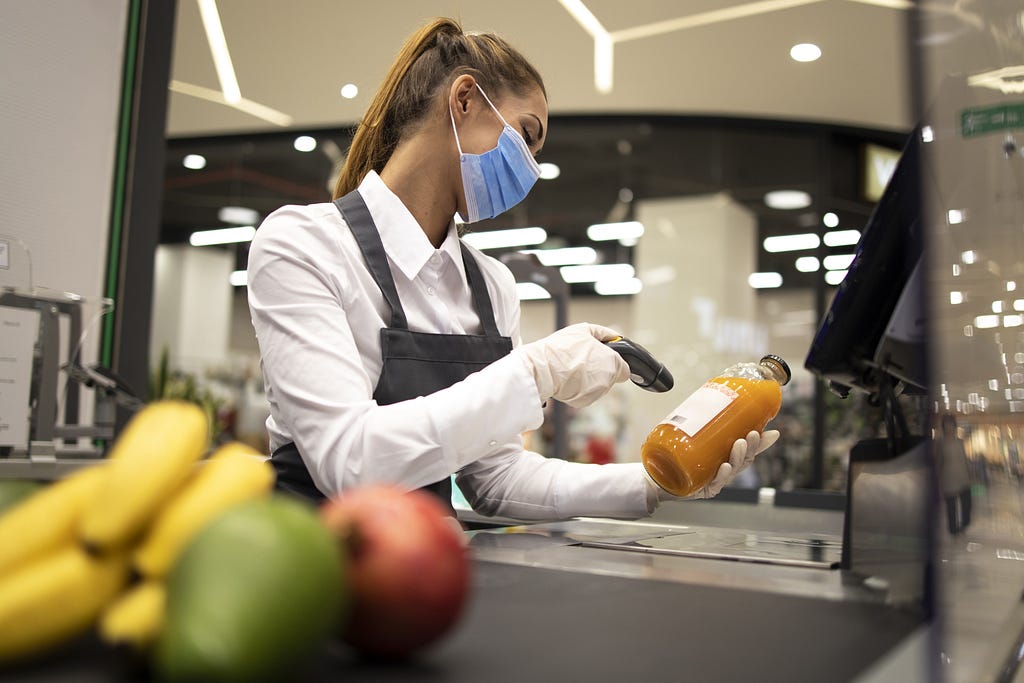
Last week National COSH released the National Agenda for Worker Safety and Health. The report lays out a eight-point plan for national reform based on workers’ lived experience, recommending that we strengthen and enforce safety laws, make anti-retaliation protections real, ensure fair and just compensation, and confront the workplace effects of climate change.
“Workers are sick, broke and dying — because so far during this pandemic, employers, OSHA and our federal government have failed to protect workers from the risk of infectious disease,” said Jessica Martinez, National COSH’s Co-Executive Director.
Worksafe agrees that the new administration needs to reaffirm a commitment to occupational health and safety science, and it needs to send a clear message to employers and the general public that workplace health and safety is key to public health — and absolutely crucial for slowing the spread of COVID.
There are initial positive signs. On his first day in office, the new president signed an executive order (EO) prioritizing worker protection issues. And barely a week later, on January 29, the Department of Labor issued guidance “intended to inform employers and workers in most workplace settings outside of healthcare to help them identify risks of being exposed to and/or contracting COVID-19 at work and to help them determine appropriate control measures.”
The president has appointed longtime worker advocates: Labor Secretary Marty Walsh and Deputy Secretary Julie Su (who will soon leave her role heading California’s labor agency). Occupational safety leaders like David Michaels and Doug Parker are advising the administration. President Biden’s January 21 EO ordered the Department of Labor to “consider whether any emergency temporary standards on COVID-19, including with respect to masks in the workplace, are necessary, and if such standards are determined to be necessary, issue them by March 15, 2021.”
In California of course we have our own “state plan” governing workplace health and safety requirements, aka Cal/OSHA. But there’s still a role for federal involvement, including greater support in terms of resources as well as advocacy in the form of oversight and accountability. We are glad to endorse National COSH’s call in the Agenda to “bolster oversight of OSHA state plans, ensuring that these jurisdictions enact and effectively enforce measures that are at least as effective as […] OSHA requirements.”
The labor agency was intentionally sidelined by the Trump Administration in the middle of an unprecedented workplace safety crisis. It is crucial that President Biden upend this sorry record. The Department of Labor must incorporate the expertise of the occupational health and safety community, including impacted workers. We must make clear that after what our communities have learned and endured in the last few years — we cannot go back to 2016. We must move forward to a far stronger place of voice and power for workers and worker safety.
Worksafe is an advocacy organization dedicated to promoting and protecting the basic right of all California workers to a safe and healthy workplace.
By Stephen Knight and Mara Ortenburger, Worksafe
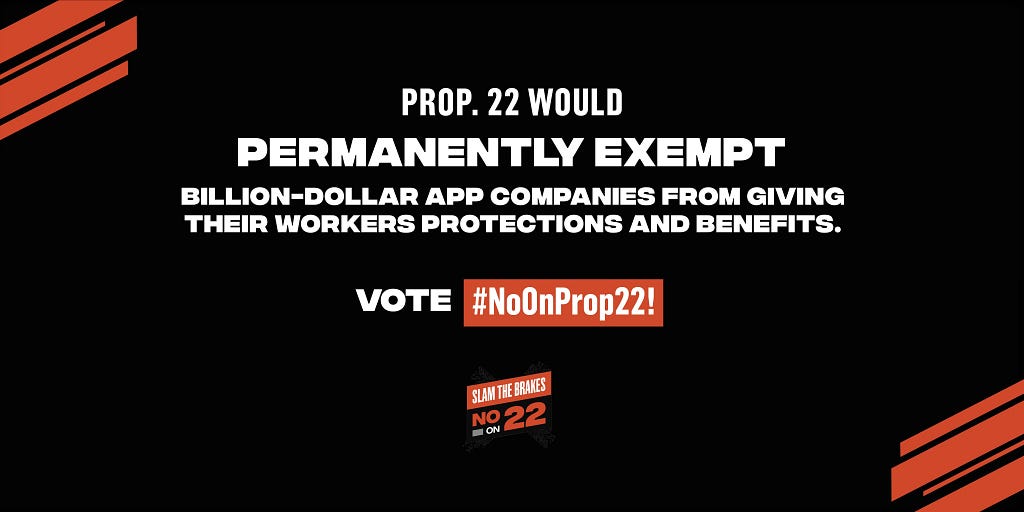
This November, California voters are being asked to support Proposition 22 — Uber and Lyft’s misleading ballot measure that would exempt them from labor laws that protect workers. Together with Postmates, Instacart, and Doordash, these wealthy corporations are spending nearly $200 million to pass Prop. 22, making it the most expensive ballot measure in state history. That level of unprecedented spending should alarm California voters and alert passengers that something is amiss.
California law and policy is clear that these workers are employees and entitled to the same protections and benefits as all California employees. Under the guise of supporting worker flexibility and freedom, these companies pocket billions by misclassifying their drivers as independent contractors. What the carshare companies expect to get from this massive investment is permanent legal protection for their refusal to provide drivers who work for them with the basic benefits due regular employees, like paid sick leave, unemployment insurance, or healthcare.
Al Aloudi, a ride-hail driver in San Francisco, was working behind the wheel in March and brought COVID back to his home.
“I was driving in the beginning of March, [and] my dad began showing symptoms of COVID by March 15th. He turned blue and couldn’t breathe, so we called an ambulance to the house and he tested positive,” Aloudi reported. Quarantined and unable to work, Aloudi applied for Uber and Lyft pandemic relief programs. He sent the companies a doctor’s note requiring that he quarantine, but both companies denied him paid sick time and temporarily deactivated him.
Written by lawyers for Uber and Lyft, Proposition 22 aims to enact a special category of labor for gig drivers that reduces the companies’ responsibility for the safety and wellbeing of both drivers and passengers. While protecting their own liability, the companies hope to reassign liability to the immigrants and workers of color who make up a substantial proportion of their low-wage employees.
The pandemic has worsened the already unstable, unpredictable working conditions of ride-hail drivers. A recent survey conducted by Rideshare Drivers United shows that only 29% of drivers are still driving despite pandemic conditions. Because drivers know the risks, a vast majority surveyed (92%) say Uber and Lyft should be providing safety supplies. With drivers’ significant out-of-pocket costs, only 7% have provided barriers between the front and back seats, despite CDC recommendations. Only 62% sanitize between passengers, because that time is unpaid, and drivers say they simply cannot afford to take the time off the road.
What these statistics show is that safety is closely linked to labor conditions.
In addition, Prop. 22 will exempt these employers from providing personal protective equipment, ensuring access to sanitary facilities, or assessing the risk of workplace violence, including sexual and physical harassment. And without paid time off or paid sick days, drivers will have little choice but to work while sick and or injured — exposing riders to illness and increased chance of accidents.
One driver from Los Angeles who is still driving is Ben Valdez.
“I bought and made my own partition to separate me from my passengers. Even during this time I still have people reaching over to pat me on the back or poke me. I am afraid of going to the back of my car and handling my passengers’ bags,” said Valdez. “I spend at least $50 a week on cleaning supplies and I’m not paid for the time it takes to clean my car. If Uber and Lyft obeyed the law and treated me as an employee, I would have access to unemployment and wouldn’t have to choose to earn money at an extremely high risk, or stay at home and risk not paying my bills.”
While protecting their own liability, the companies hope to reassign liability to the immigrants and workers of color who make up a substantial proportion of their low-wage employees.
The contempt that these gig economy giants have for the public is exemplified by the measure’s unprecedented requirement of a seven-eighths’ majority of the legislature to amend the rules drafted by Uber and Lyft. These companies are trying to deceive voters into passing their special rules, and then bar our representatives from ever touching that law again.
Meanwhile, drivers who don’t earn enough money and are denied basic protections work harder and longer hours, and are forced to take more risks to secure more rides. As businesses and schools reopen, more and more drivers will get back on the road — and without proper cleaning and protections supplied by the employer, riders will pay the price as well.
This is a historic battle under way in California to reset the balance between employers and employees by ending Uber and Lyft’s cynical manipulation of labor law. California voters should reject the premise that, given enough power and money, companies can simply deregulate themselves.
Worksafe is an advocacy organization dedicated to promoting and protecting the basic right of all California workers to a safe and healthy workplace.
This November, California voters are being asked to support Proposition 22 — Uber and Lyft’s misleading ballot measure that would exempt them from labor laws that protect workers. We must reject the premise that, given enough power and money, companies can simply deregulate themselves.
By Nicole Marquez-Baker, Worksafe

The way workplace hazards impact workers, particularly workers of color, is nothing new. When I started with Worksafe in 2012, we were helping Warehouse Worker Resource Center (at the time Warehouse Workers United) file a Cal/OSHA complaint. Domingo Blancas, a Latino immigrant, had fallen ill while working in an extremely hot warehouse in Ontario, California. Like many temporary warehouse workers, Domingo had never been trained on heat illness symptoms or emergency procedures. In fact, his employer disregarded his pleas for help.
Domingo’s life is precious and unique; there is only one of him. Sadly, his employer’s callous attitude is not unique at all. During my time at Worksafe, I have seen that tolerance for workplace harm has always been oppressive — rooted in racism and classism. It’s a system that normalizes treating black and brown workers as disposable, forgettable, and replaceable.
Domingo survived heat stroke after being hospitalized for three days. His experience with indoor heat hazards — along with many other workers of color, immigrant workers, and low-paid workers — influenced a change in the law in 2016. SB 1167 (Mendoza) required Cal/OSHA to create a standard with specific employer requirements for indoor heat protections by 2019. It’s now ten months into 2020, and that standard has yet to be finalized. To me, this serves as a reminder that advocacy does not end when a change is made on paper. We have to keep fighting until change is executed and enforced.
Now, as I leave Worksafe, COVID-19 is highlighting just how dangerous work has always been for black and brown workers like Domingo. Some of these workers are still carved out of Cal/OSHA protections. This reality has catapulted us into reimagining our relationship with work. And workers are leading important changes — whether through legislative advocacy to gain Cal/OSHA coverage for domestic workers and day laborers or by pushing for stronger workplace protections from hazards like COVID-19.
As I reflect on my time with Worksafe, I’m grateful for our successful advocacy on behalf of folks like Domingo. As a woman of color, I take great pride in being able to serve as conduit for my community. I’m filled with a great sense of appreciation for this work and a great sense of responsibility to keep moving the dial towards justice. Together, we can change this paradigm.
Justice is not self-executing, justice takes work! Adelante!



